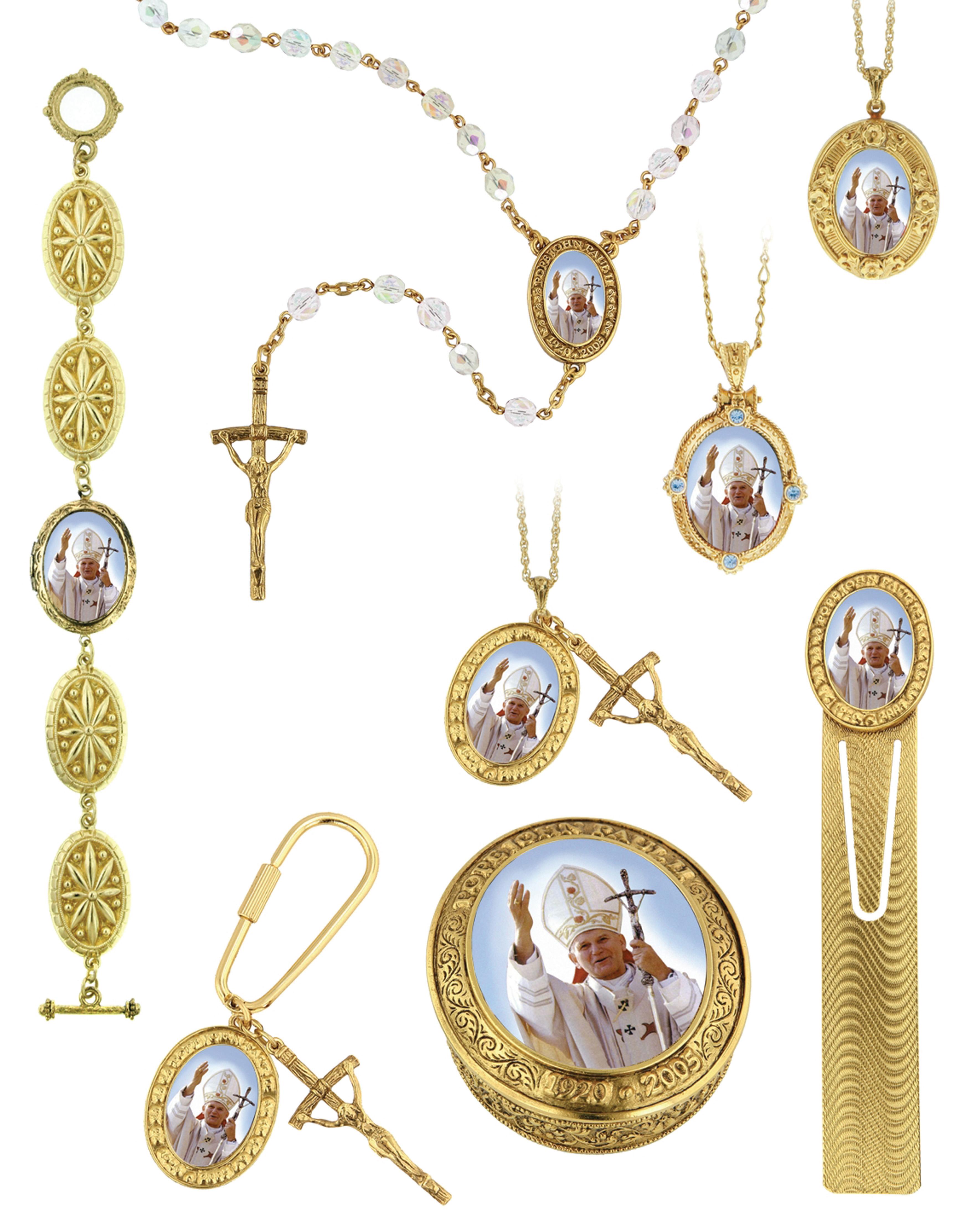




















WA Catholic Education Office director Ron Dullard has warned that remote schools in the Kimberley are at risk if funded on an individual basis based on student numbers.
The Federal Government is currently reviewing funding arrangements for all schools for the first time since 1973, and the National Catholic Education Commission, of which the WA CEO is a member, lodged its submission on 31 March.
The NCEC’s submission called for maintaining block funding to State and Territory Catholic Education Commissions so Catholic school systems can continue to distribute funds to schools like those in the Kimberley according to assessed local need.

“Independent schools don’t cross subsidise or help each other; that’s not our system. We recognise that we know our schools best and we know where to give the support, like Clontarf and remote Kimberley schools which would not survive if given the amount of money generated by the number of students that they have,” Mr Dullard told The Record
A key part of the NCEC’s submission was appealing for equity in funding for disabilities, Indigenous students, those in remote areas, new arrivals and refugees for whom English is a second language, in order to achieve better educational outcomes.
“They should get the same amount for their disability [or learning challenges] as if they were in a State school,” Mr Dullard said.
Currently, students with a disability get a loading of up to 0.7 over and above that of a ‘standard’ student, but “the cost for educating a child with a disability could be substantially higher, so, to be equitable, the severity of the disability should attract funding to Please turn to Page 6




WHEN the Mitchell children of Albany parish saw an amazing new personal water filter in an inventions book, they couldn’t have known where it would lead.
Cameron Mitchell, 11, recently read the information about the Lifestraw personal water filter, showed it to his parents and asked if the family could buy some for the children in the world who needed them.
“They thought it was a great idea, but said we could only afford to buy a small

number, and that’s when I decided to get together with my sisters to see what we could do to buy lots of them,” Cameron told The Record Cameron told his younger sisters, Iona, 10 and Tighean, 7 about the idea and they got together to think of ways of getting money to buy filters for children in Africa and Haiti, the latter of which is still reeling from the effects of a devastating earthquake last year. They were very aware of the plight of children in those countries, having seen
videos and articles showing their desperate need for safe, clean, drinking water.
The children decided to bake and sell cakes and biscuits over two weekends after Mass at Holy Family Church in Albany. The bake sales raised just under $1,000 and with 125 Lifestraws now on their way to the village of Tarakea, Tanzania, the trio have been inspired to do much more.
“The ‘LifeStraw Personal’ is a portable water purifier that can be carried around
Please turn to Page 6
BRAND NEW items exclusively made for The Beatification of Pope John Paul II. See Page










WA Catholic Education Office director Ron Dullard has warned that remote schools in the Kimberley are at risk if funded on an individual basis based on student numbers.
The Federal Government is currently reviewing funding arrangements for all schools for the first time since 1973, and the National Catholic Education Commission, of which the WA CEO is a member, lodged its submission on 31 March.
The NCEC’s submission called for maintaining block funding to State and Territory Catholic Education Commissions so Catholic school systems can continue to distribute funds to schools like those in the Kimberley according to assessed local need.
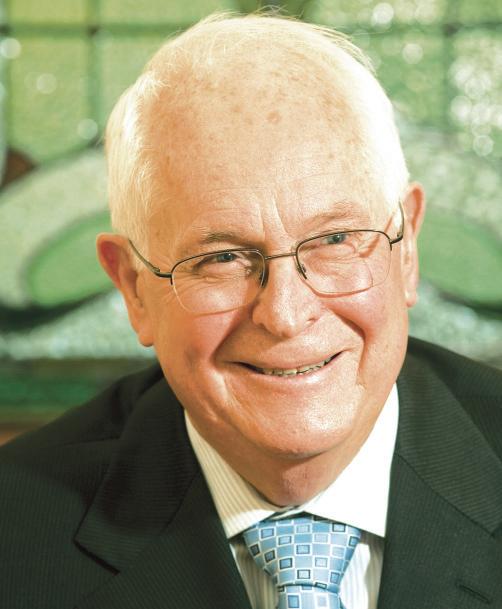 Ron Dullard
Ron Dullard
“Independent schools don’t cross subsidise or help each other; that’s not our system. We recognise that we know our schools best and we know where to give the support, like Clontarf and remote Kimberley schools which would not survive if given the amount of money generated by the number of students that they have,” Mr Dullard told The Record
A key part of the NCEC’s submission was appealing for equity in funding for disabilities, Indigenous students, those in remote areas, new arrivals and refugees for whom English is a second language, in order to achieve better educational outcomes.
“They should get the same amount for their disability [or learning challenges] as if they were in a State school,” Mr Dullard said.
Currently, students with a disability get a loading of up to 0.7 over and above that of a ‘standard’ student, but “the cost for educating a child with a disability could be substantially higher, so, to be equitable, the severity of the disability should attract funding to Please turn to Page 6




WHEN the Mitchell children of Albany parish saw an amazing new personal water filter in an inventions book, they couldn’t have known where it would lead.
Cameron Mitchell, 11, recently read the information about the Lifestraw personal water filter, showed it to his parents and asked if the family could buy some for the children in the world who needed them.
“They thought it was a great idea, but said we could only afford to buy a small

number, and that’s when I decided to get together with my sisters to see what we could do to buy lots of them,” Cameron told The Record Cameron told his younger sisters, Iona, 10 and Tighean, 7 about the idea and they got together to think of ways of getting money to buy filters for children in Africa and Haiti, the latter of which is still reeling from the effects of a devastating earthquake last year. They were very aware of the plight of children in those countries, having seen
videos and articles showing their desperate need for safe, clean, drinking water.
The children decided to bake and sell cakes and biscuits over two weekends after Mass at Holy Family Church in Albany. The bake sales raised just under $1,000 and with 125 Lifestraws now on their way to the village of Tarakea, Tanzania, the trio have been inspired to do much more.
“The ‘LifeStraw Personal’ is a portable water purifier that can be carried around
Please turn to Page 6
BRAND NEW items exclusively made for The Beatification of Pope John Paul II. See Page

THE Desolata, a mediaeval Servite tradition where people grieve with Mary in expectation of the resurrection, will again be held at St Denis,’ Joondanna on Good Friday.


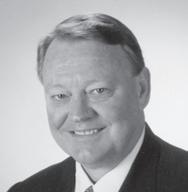
The tradition has been celebrated in the parish since 1952. Joondanna parish priest, Servite Fr Peter Porteous, said it usually draws 200 to 300 people from the parish and beyond.
“There’s a lot of sorrow entering the room, you feel it. It’s a very sad night but also a great one,” he said.
Those who come along this year are invited to bring photos of their departed loved ones to the service.
“During the service, we invite them to place those photos at the foot of the Cross on the sanctuary with Our Blessed Mother,” Fr Peter said.
After the service, these photos will be perpetually placed in the Via Matris Chapel at the back of the church.
Dating back to the 13th and 14th centuries, the Desolata Service is based on the seven-decade Servite Desolata Rosary which looks at the “sufferings of Mary as related to the sufferings of Jesus,” Fr Peter said.
It is also closely related to the Via Matris (the Way of the Mother): seven stations meditating on the sufferings of Mary.
The Desolata Rosary has seven mysteries and focuses on “Mary’s Passion”.
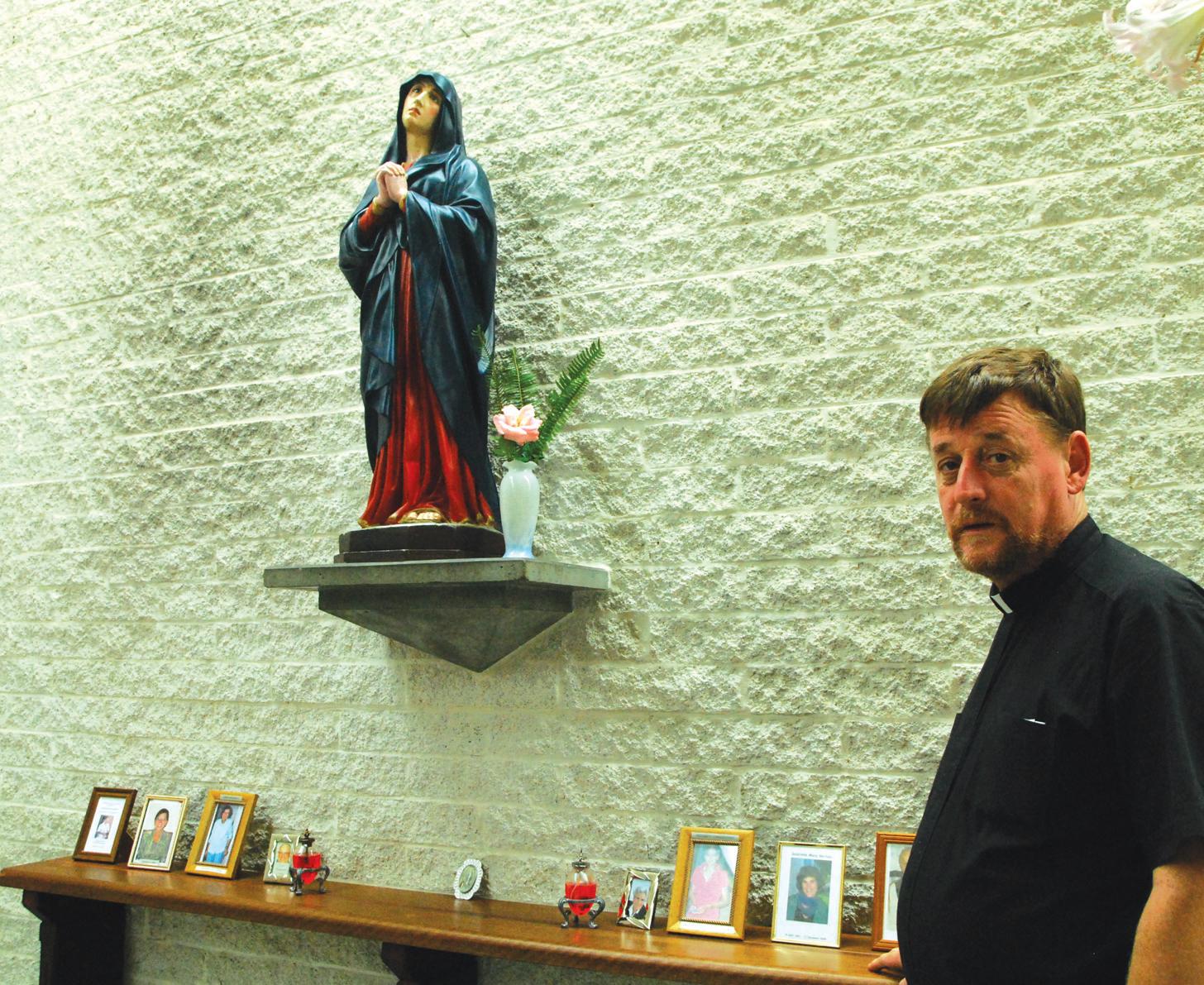



Journalists
Anthony Barich abarich@therecord.com.au
Advertising/Production
Accounts
June Cowley accounts@therecord.com.au
Classifieds/Panoramas/Subscriptions
Catherine Gallo Martinez office@therecord.com.au
Record Bookshop
Bibiana Kwaramba bookshop@therecord.com.au
Proofreaders
Chris Jaques Eugen Mattes
Contributors
Debbie Warrier John Heard
Karen and Derek Boylen Anthony Paganoni CS
Christopher West Catherine Parish
Bronia Karniewicz Fr John Flader Guy Crouchback
The Record PO Box 3075
Adelaide Terrace
PERTH WA 6832
21 Victoria Square, Perth 6000
Tel: (08) 9220 5900 Fax: (08) 9325 4580
Website: www.therecord.com.au
The Record is a weekly publication distributed throughout the parishes of the dioceses of Western Australia and by subscription.
The Record is printed by Rural Press Printing
Mandurah and distributed via Australia Post and CTI Couriers.
“In the 13th and 14th centuries, the Sorrows of Mary played a very important part in Servite spirituality,” Fr Peter said.
The Servite spirituality originally was imbued with a charism of service to Mary and then another charism centred on the suffering of Mary started to develop, Fr Peter said.
The Desolata Vigil Service will begin at 7pm - after sunset - on Good Friday and will focus on the seven mysteries: Simeon’s Prophesy; The Flight into Egypt; Jesus is Lost in the Temple; Jesus meets His Mother; Jesus dies on the Cross; The Pieta; and Jesus is Laid in the Tomb.
After the service, everyone is invited to stay in vigil with Our Blessed Mother until midnight.
Fr Peter said that this service is “very powerful for mothers because they can relate to the suffering of their children”.
“It’s very moving when they all come here; in many cases, parents have experienced what Mary’s going through in different ways,” he said.
“It becomes a good opportunity for people to connect with Mary in her suffering and their suffering,” he said.
The Desolata Vigil will be held at 7pm on Good Friday at St Denis’ parish, 60 Osborne St, Joondanna.
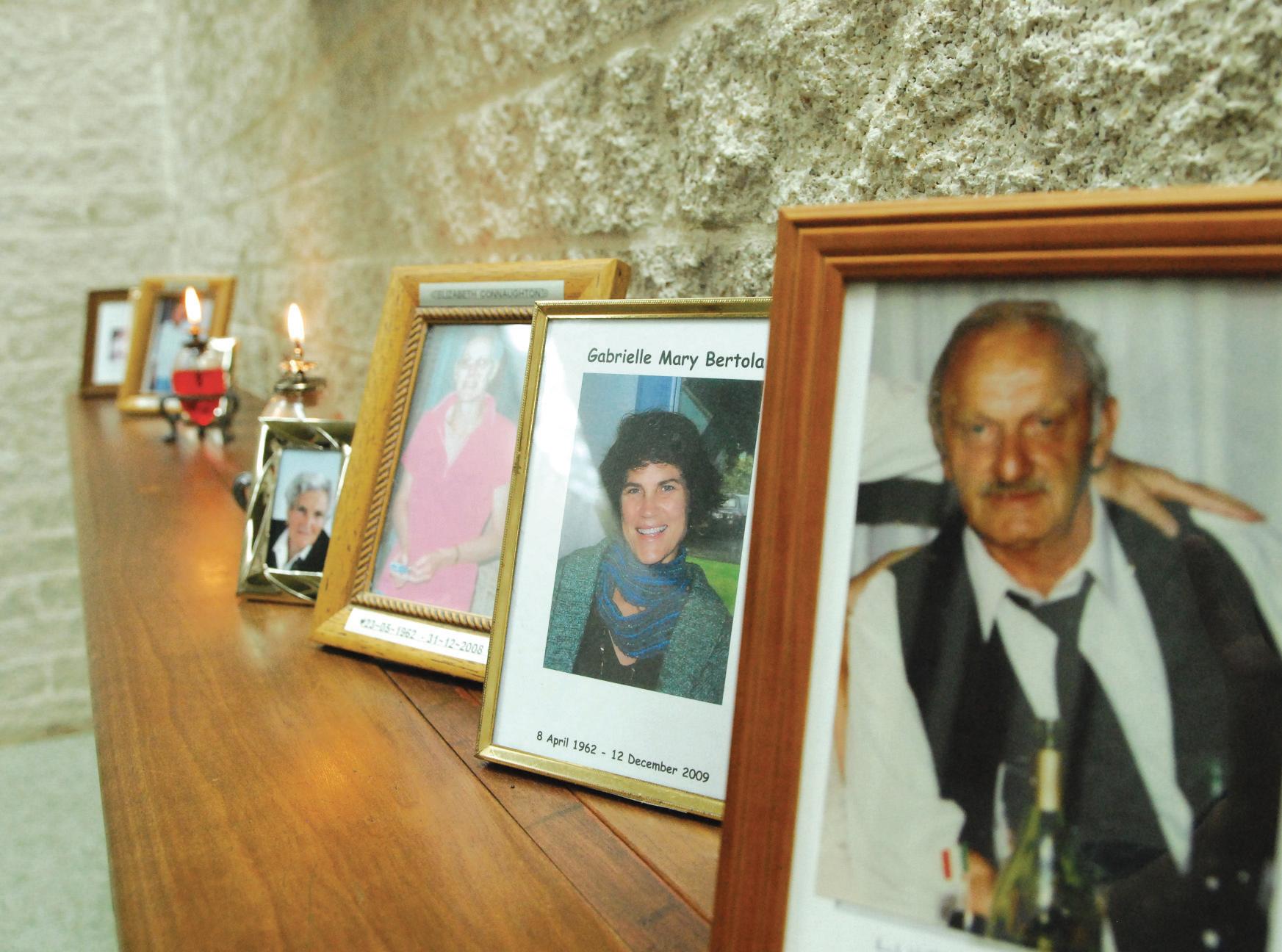
1) The Prophesy of Simeon: Mary’s told by Simeon that her child will be the cause of the rise and fall of many people in Israel and that a sword will pierce her own heart; that whatever happens to Jesus, she will feel. The suffering of Jesus is linked to the suffering of Mary.
2) The Flight into Egypt: Mary’s forced to leave her homeland and go into the wilderness because of Jesus. Her own child causes Mary and others (such as the Holy Innocents) to lose their lives.
3) The Loss of Jesus in the Temple: He is 12 and she has lost Him for three days. This station focuses on the anguish of a mother looking for her son. Jesus is called to fulfill the Father’s will. It calls Him to leave Mary. How many mothers have lost their son/daughters to drugs and they’re helpless; or when they have to let their son/ daughter go to fulfill God’s will. It’s the letting go.
4) Mary meets Jesus on the Way to Calvary: This station focuses on a mother who has to watch her child suffer and there is nothing she can do. There are times when mothers are unable to stop the suffering and are powerless.
5) Jesus dies on the Cross: This station focuses on the powerlessness of Mary to stop the event. Simeon’s Prophesy comes true. As with the death of any child, part of the mother dies with the child.
6) Mary receives the Dead Body of Jesus in her Arms - The Pieta: Here, Mary is presented with the Body of Jesus. The first time she was presented with His Body was at His birth; this time it is at His death. There is utter desolation. How many mothers have had their children handed to them in that state?



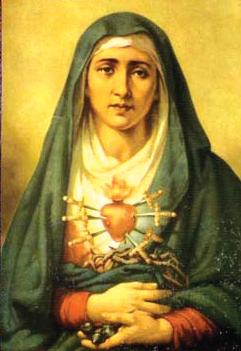
7) The Laying of Jesus in the Tomb: Mary is not allowed to grieve. Jewish custom allows her to stay until sunset because the following day is the Sabbath. She lays Him in the tomb and is hurried out. The stone is rolled across and by sunset, she is out of the cemetery. Her grieving is done at home. How many mothers have been unable to grieve over the death of their own children due to circumstances beyond their control? They’ve had to grieve alone.
THE Secular Franciscan Order has reshuffled its leadership with an eye to promoting itself to the younger generation.
Anthony Porrins, the most recently professed member of the Third Order of St Francis on 17 September, was appointed secretary of the regional council on 13 March at the Edel Quinn Centre in East Perth. He is 39. Most other members are over 50.
Mr Porrins, a marketing officer for a Kelmscott roof restoration company, said there is a “whole potential group” out there of young people who could be attracted to the charism.
St Francis has much to offer today’s youth, he said, as the 13th century saint was a reformer, and “youth are always keen to find new ways of doing things”. The difference was that Francis sought reform of the Church not through seeking power but through humility, in imitation of Christ.
“St Francis had a youthful spirit, and most of the early Franciscans who joined his Order were young,” Mr Porrins said.
He stressed, however, that discerning to join the Secular Franciscans is a calling from God – “God has to do something with you being there,” he said.
“It’s an attraction, a pull. You join because you want to share in the mission of the Franciscan family.”
St Francis founded the Third Order in 1221 as the Brothers and Sisters of Penance, known as tertiaries, as a middle state for those who, due to marriage or other ties, are barred from entering the first two Orders for professed Religious.
There are currently about 40 active professed members and many others who are non-active due to
retirement etc. Angela McQuire was appointed the regional council’s new Regional Minister after her husband Michael retired following many years of service.
Antoinette Frendo was appointed Vice Minister – a ceremonial role as one who officiates in the place of the regional minister if the latter is absent at meetings.
Anne-Marie Langdon was appointed Formator, responsible for ongoing formation for both people discerning to profess and for fully professed members, including organising reflection days twice a year, an annual retreat and time spent during monthly meetings in each fraternity which is spent discussing Franciscanism, an element of St Francis’ life or an element of his teaching.
Noel D’Souza, also one of the regional council’s younger members, was appointed treasurer.
As sectetary, Mr Porrins assists the regional minister in liaising with local, regional, national and international fraternities. He also organises the meetings.
The elections were chaired by the Secular Franciscans’ national minister Sandra Tilley from Sydney, and observed by Fr John Spiteri OFM Capuchin from Queensland, who is also the National Spiritual Assistant of the Order.
The day was concluded with Holy Mass offered by Fr Spiteri and concelebrated by Fr Michael Brown OFM who is Regional Spiritual Assistant for WA.
The Secular Franciscan life for the professed entails morning and afternoon praying of the Divine Office and monthly meetings with fraternity groups which consist of up to 15 people.
There are Secular Franciscan fraternities in Perth, Midland, Dardanup and Balcatta.
St Vincent de Paul Society, nervous chief executives gear up for second annual CEO Sleepout
FORTESCUE Metal Group chief executive Andrew Forrest looks forward to the 16 June St Vincent de Paul Society CEO Sleepout with some trepidation after last year’s experience.
Mr Forrest, who joined some of Perth’s most prominent business and community leaders to put homelessness on the agenda on 12 April at the WACA to launch the 2011 Vinnies CEO Sleepout, said it was “uncomfortable” last year.
“It was certainly uncomfortable sleeping out for the 2010 CEO Sleepout, but not as uncomfortable as the thought of many of our fellow Australians who do this every night of the week,” Mr Forrest said.
“The Vinnies Sleepout was a great way to raise money for homeless Australians and, more importantly, awareness for each person who has no other choice but to find a home on the streets.”
JESUS is the only permanent healer, international speaker Diana Mascarenhas told more than 30 people gathered at the Holy Family parish centre in Como on 2 March.
Ms Mascarenhas, co-director of the Institute for World Evangelisation, and Fr Elias Vella (OFM), the official Exorcist of the Maltese diocese, were in Perth at the invitation of Catholic Charismatic Renewal (CCR) to present their “SetFree Healing Ministry”.
The SetFree programme, which the pair have been presenting around the globe since 2005, is designed to bring healing and wholeness through the Holy Spirit to those who have been emotionally, spiritually and psychologically wounded.
“Psychology can provide us with insight and self-knowledge,” she explained to participants, “but it will not heal us.”
Ms Mascarenhas said that only God can heal the root causes which have led to the brokenness of individuals and that these wounds usually occurred in childhood, even within the womb.
She explained how one could discern and recognise amongst others external signs and behaviours such as anger, depression, sexual promiscuity, self-pity and impulsiveness that can identify deeper wounds.
She also addressed common psychological issues that those who pray with others may encounter and provided practical and spiritual advice on how to assist in identifying the feelings that can lead to recognising the issues that need God’s healing.
In his presentation, CCR Chairman Dan Hewitt emphasised the responsibilities of those who were called to pray for others. To ensure that they received the healing God intended, he said, it was important that those praying were aware of their own prejudices, were always conscious of their listening and communication skills, made every effort to be non-judgemental, to treat others with dignity and were willing to


look for Christ in everyone. Fr Vella captured the attention of participants immediately: “I will talk today about the Devil”. He spoke about the growing forays into Satanism, New Age and the occult, black magic and fortune telling and how this was leading to an increase in cases of possession and the need for deliverance prayer.
The programme, which consisted of a three day retreat in Safety Bay (47 participants) and two one day workshops in Perth, draws its inspiration from John 8:36, “When the Son sets you free, you shall be free indeed”. The main focus of SetFree is to restore a participant’s true identity in Christ through Sacraments, prayer, the Word of God and Christ-centred therapy.
Speaking to The Record, Dan Hewitt said that Diana and Fr Vella, who both have qualifications in psychology and counselling, were able to not only exercise the Spiritual Gifts but also to help participants understand their own brokenness and how this brokenness came about.
Mr Hewitt believed that this psychological insight was vitally
important in the process of healing as it helped pinpoint where forgiveness was needed, whether it be for oneself, others or even in our perceptions of God.
He said that each of the SetFree sessions usually commenced with a teaching on some aspect of psychology, designed to assist listeners in grasping the reality of their own wounds, so that they could gain an insight into who, and what, in their past had caused them to be where they are today.
These teachings were then followed by prayer sessions, introducing items such as the crucifix and statues of the Holy Family to help people relate to God’s presence in their circumstances.
Mr Hewitt said that he has received testimonies from a number of participants who received healing in areas of personal hurt, relationships, guilt, forgiveness and a deeper recognition of God’s love for them.
For those wanting more information on SetFree Ministry and the Institute for World Evangelisation - the missionary expression of the Glory of God International Covenant Community –visit their website at www.icpe.org.
Burswood Entertainment Complex CEO Barry Felstead, Youth Affairs Council of WA executive officer Craig Comrie and Lycopodium Minerals Managing Director Peter De Leo are just a few of the 34 already registered 2011 CEO Sleepout participants.
St Vincent de Paul Society (WA) Inc CEO John Bouffler and St Vincent de Paul Society (WA) Inc State President Clèment Astruc also attended the 12 April launch.
Homelessness will be on their agenda at a typical boardroom meeting – except not in a usual office setting but on the WACA oval, the same oval which will be their bed come 16 June according to a St Vincent de Paul Society statement. The leaders aim to encourage other leaders to register to sleep out, spread the word about homelessness that affects over 105,00 Australians each night and bring about change for a more just and compassionate society which is in line with the St Vincent de Paul Society’s ethos.
The second annual Sleepout to be held in Perth will also be held in every State and Territory around Australia on the same evening with the aim to raise over $3 million.
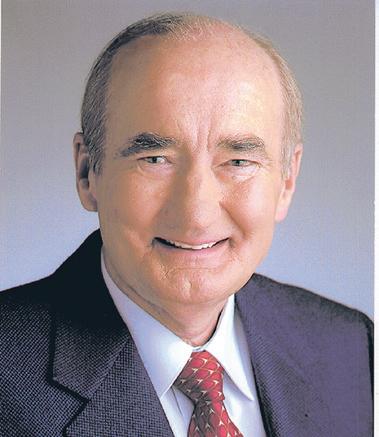
SAINT Emilie’s Parish youth choir has proved so successful over the past year that parish priest Fr Robert Carrillo has dedicated a whole Sunday Mass to young people.
For the past year, the youth choir has done the music at the Canning Vale parish at the 9am Mass on the first Sunday of every month.
But now the entire Mass has been designated as a youth Mass, with young people to undertake all lay roles including reading, taking up the offertory and collections and being special ministers of the Eucharist.
The fellowship in the parish grew as more than 300 people participated in a sausage sizzle on 3 April after the 9am Mass at the Canning Vale parish to raise money for the at least 16 youth who will attend this year’s World Youth Day in Madrid.
The parish has so far raised more than $9,000 for the youth attending WYD with a dinner dance and small events like fellowship after the 9am Sunday Masses. There are about 40 in the parish youth group.
“It was wonderful to see the youth’s active participation during the Mass with the Youth Choir leading the congregation with songs and hymns and Proclaimers
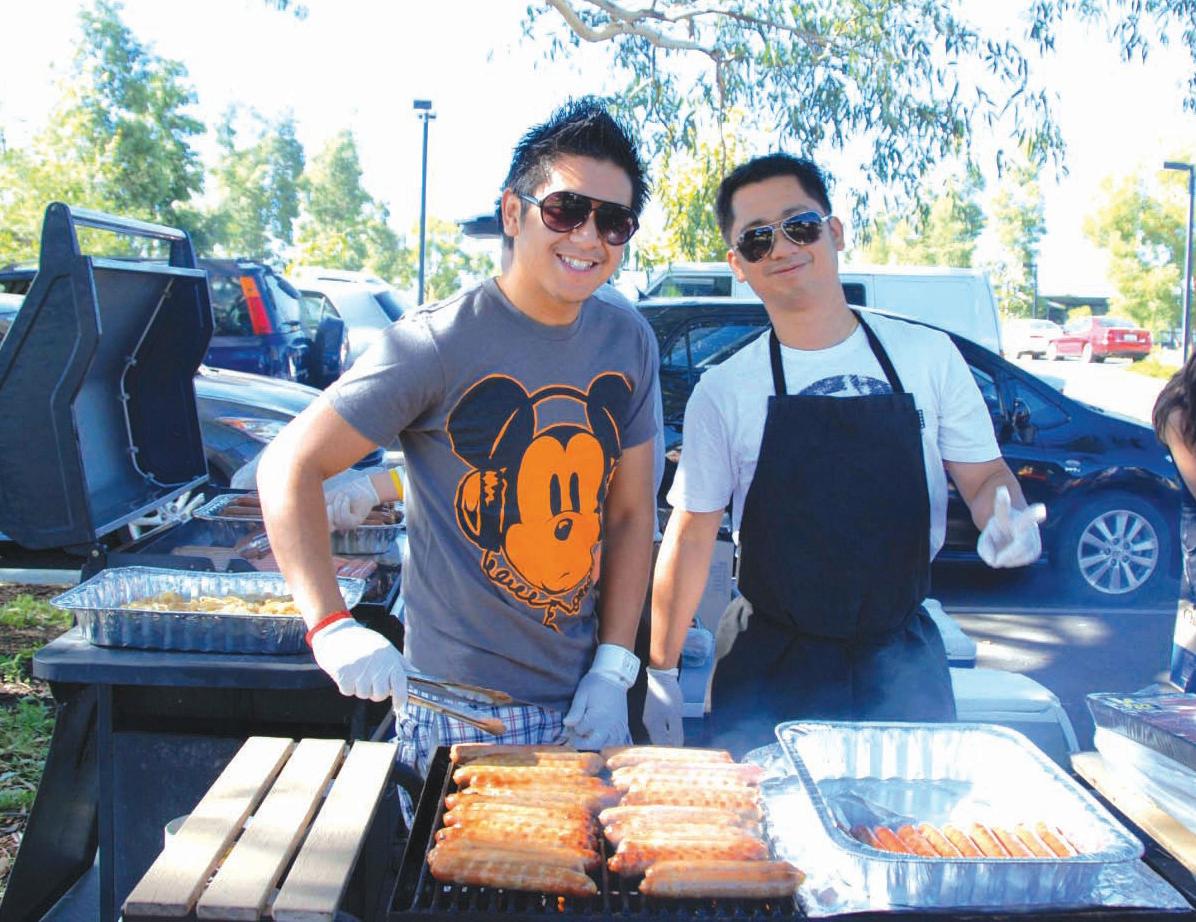
of the Word were also represented by the youth,” parishioner Francis Felipe said.
“The day was full of support from the parishioners and they were more than generous with their purchases and donations. A huge thanks to the Youth Committee and all those involved in making this day the great success that it was. The occasion also attracted new young parishioners to join in the youth ministry. Not only was it a fundraising event but it also gave the young people of the parish an opportunity to socialise with their fellow youth members.”
PHOTOS: FRANCIS FELIPE

St Mary’s is a co-educational, single stream school with an enrolment of 264 students from Kindergarten to Year 7 serving the parish community of Bunbury. The school was founded by the Sisters of Mercy in 1904 and the model of education offered is founded on Gospel Values which encourages students to aspire to the school’s motto Respect, Faith, Courage in all facets of their lives.
St Mary’s caters for all students’ needs and offers literacy and numeracy support across all year levels. A Gifted and Talented program provides an opportunity to develop and extend the student’s personal interests and talents, while Information Technology is integrated into the learning process. The You Can Do It! and PATHS social/emotional programs support the development of resiliency and interpersonal skills for the students.
An excellent Early Learning Centre operates for the pre-compulsory years of schooling (4–5 year olds) and reflects the Reggio Emilia philosophy of early learning.
Inter-house and inter-school competitions are held and the students have the opportunity to participate in music and performing arts competitions, locally and in Perth. The parent community at St Mary’s are very involved in supporting the staff and students through the work of the Parents and Friends’ Association and individually by volunteering generously to assist in the classrooms.
St Anne’s is a single stream, co-educational Catholic school with an enrolment of 226 students from Kindergarten to Year 7. The school was established by the Sisters of Mercy in 1935 and is located 40kms from Bunbury and 150kms from Perth. Harvey has the benefits of being close to the rolling hills of the Darling Scarp and is only 20 minutes from the ocean.
St Anne’s has vibrant, committed staff who work collaboratively to provide a quality Catholic Education for all students. The school has consolidated high standards of professional practice through a commitment to early intervention. In recent years the school has had a focus on literacy targeting the whole school approach and this has led to outstanding improvement in Naplan results.
A rich and varied curriculum is provided, including art, music, computing, LOTE (Italian), physical education (including Bluearth) and library studies. A recent highlight of the curriculum has been the establishment of a Sustainability Centre which has been met by an enthusiastic student response and strong corporate sponsorship.
The school works closely with the parish and wider community and receives support from an enthusiastic and committed School Board and Parents and Friends’ Association.
The successful applicants will be required to take up these positions on 1 January 2012.
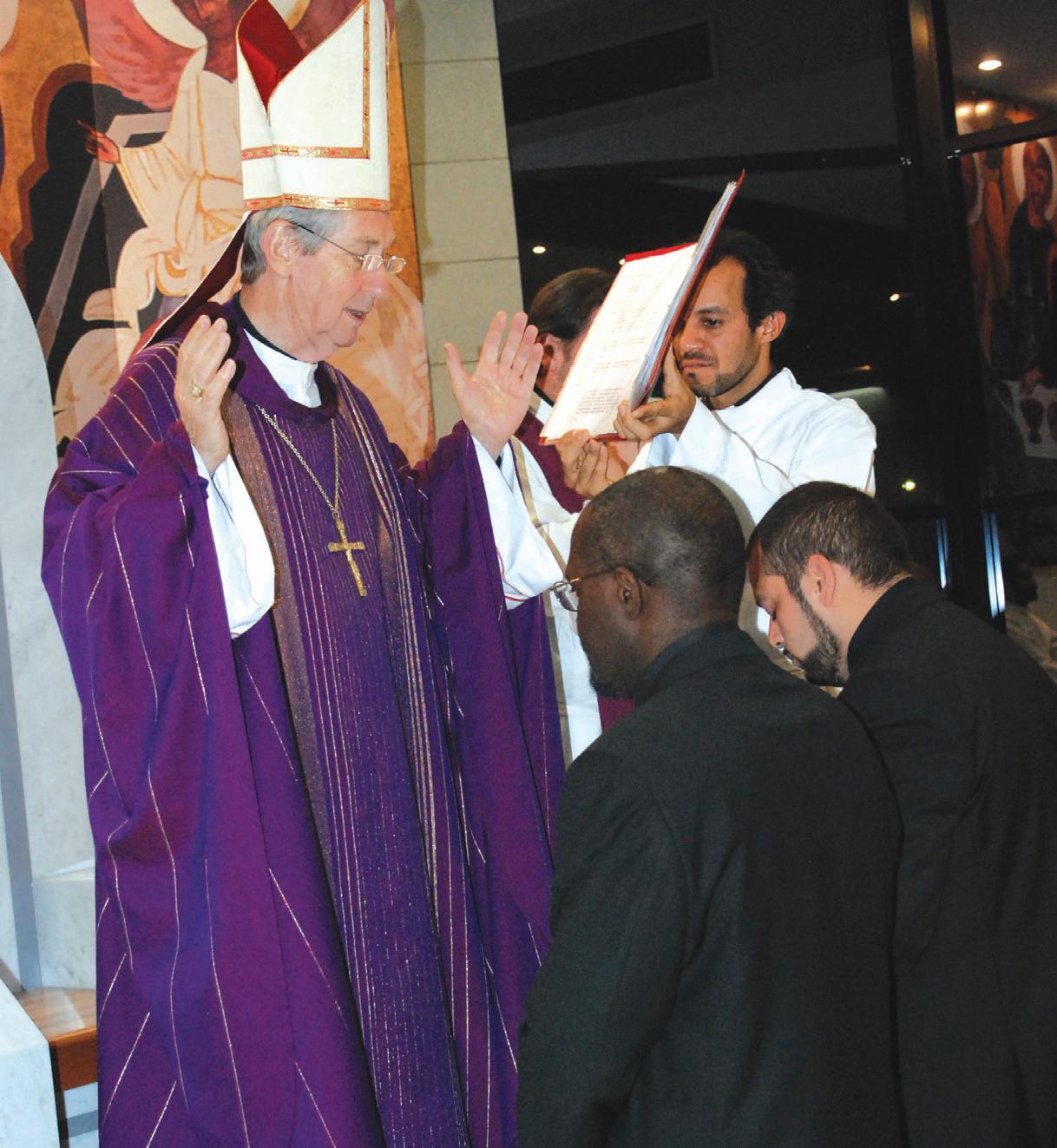 BY ANTHONY BARICH
BY ANTHONY BARICH
TWO more men moved closer to the priesthood in Perth last week when Archbishop Barry Hickey accepted an Italian and a Zambian’s candidacy at the Redemptoris Mater missionary seminary in Morley on 8 April.
Crispin Witika, 47, and Giovanni Raffaele, 25, who have already undergone three and four years of formation respectively, have both had strong and long involvement with the Neocatechumenal Way throughout their lives that has led them to this point.
Crispin, originally an electrical engineer, left work two decades ago to work as a lay missionary with the Way, working first in his own country for two years, then for 13 years in Uganda, three years in Ireland and three years in Italy.
It was in Italy where, for Crispin – the eighth of 13 children - “the Lord caught me red-handed and said to me ‘you are the one’,” he recalled to The Record.
Giovanni, the third of five children, was born into a Neocatechumenal Way community in the port city of Messina in Sicily and worked as a chef before finding his vocation.
This event previews the ordination to the diaconate of three more international missionaries from the Morley seminary – Antonio Scala (Italy), Wilson Donizetti Martins Jnr (Brazil) and Marcelo Parra Gonzales (Chile) at St Mary’s Cathedral at 7.30pm on 26 May.
In declaring their candidacy, Crispin and Giovanni, members of two of the five Neocatechumenal communities based at Mirrabooka parish, make themselves available to be sent anywhere in the world, while being dedicated to the local Catholic community which seminary Rector Fr Michael Moore SM said before the special Mass is a critical part of the pair’s commitment.
These two have now officially set themselves on a trajectory to join the long line of men who have been ordained as priests for Perth from the missionary seminary.
Since the seminary was established in 1994, 27 men from it have been ordained to the priesthood for the Archdiocese of Perth. After ordination, they often spend their initial few years in Perth then move on to somewhere else in the world where missionaries are needed in accordance with the charism of the Neocatechumenal Way.
The first ordinations from the seminary were in 1997.
During the Mass in which he accepted the pair’s candidacy, Archbishop Hickey said having such a ceremony is important as it gives the men a strong incentive.
It reminds them in no uncertain terms that they are headed for ordination to the diaconate and ultimately to the priesthood, he said. Acceptance of candidacy is the acceptance of “the awesome nature” of the priesthood to which they are committing themselves.
The candidacy Mass is also important for the Bishop, to “know they’re on the last lap”; it makes it clear that this is a life-long commitment to accept the call from God through the ministry of the Church, he said.
“The Bishop should have the highest expectations of them,” Archbishop Hickey said, because, as St Paul said, they will give the light of Christ, His peace and hope to those who are in darkness.
This commitment makes it clear that it is not enough to “just be nice people who will do a series of duties”, he said. Mission implies leadership in humility of service.
The Mass where the Archbishop accepted the pair’s candidacy to the diaconate and priesthood was concelebrated by eight priests and was attended by lay members of the Neocatechumenal Way in Mirrabooka.
IT was standing room only at St Bernadette’s in Glendalough on 3 April as the parish celebrated its 50th anniversary with Archbishop Barry Hickey.
The Archbishop, parish priest Fr Doug Harris and his assistant, Fr Joseph Remi Asnabun, concelebrated 9am Mass to mark the occasion.
More than 300 parishioners attended the Mass and about half of those attended a celebratory morning tea for the parish at the nearby Little Sisters of the Poor Home for the Aged afterwards.
A painting of St Bernadette, painted by Rockingham daily communicant Joe Faihley, was unveiled during the morning tea. He had painted it as a gift for the parish, “not knowing about our anniversary,” parish priest Fr Doug said.
At morning tea, Archbishop Hickey spoke about the history of the word ‘Glendalough,’ pronounced, ‘Glendalock’.
Glendalough - which means ‘between the two lakes’ - was named by Archbishop Redmond Prendiville after the town in Ireland.
Ted Brindle gave a history of the parish followed by Glendalough’s parish priest of eight years, Fr Harris, who focused on its future.
“Where is the parish going?” he asked, and encouraged people to get more involved in the Legion of Mary but also in basic ecclesial communities. He asked if someone
Archbishop Redmond
Prendiville consecrated St Bernadette’s, Glendalough on 26 March 1961 but the first parish priest’s tenure predates this.
St Bernadette’s Parish Priests
Fr John Leech (1959-72)
Fr Patrick Gavin (1972-77)
Fr Edward O’Halloran (1977-93)
Fr Michael Byrne (1993-2002)
Fr Tiziano Bogoni (2002)
Fr Doug Harris (2002-current)
Fr Josep Remi Asnabun, assistant parish priest, (2009-current)
would volunteer to organise small groups to encourage people within their own area to come Mass.
“Someone who lives in that geographical area would take that role of reaching out to people in that area with the intention of bringing them back to Mass,” he said, and encouraged people not to be shy and to step forward and help.
Apart from being parish priest,

SAINT Luke’s Parish in Woodvale held a Ministries Formation Day on the Eucharist on 9 April, during which the upcoming Missal translation changes were well accepted.
Forty-five members involved in various ministries within the parish including acolytes, special ministers, readers, ushers, musicians, choir members and others attended the Formation day, which was “extremely well presented” by acting parish priest Fr Dennis Sudla, according to a statement from the parish.
The day began with Morning Prayer in the church which was a very new experience for most, because, apart from appropriate hymns at the beginning and end, Fr Sudla led it by involving the group in the shared chanting of the Psalms which was made more beautiful by his “outstanding and melodic voice”.
The actual subject for the day, the Eucharist, commenced with Fr
Fr Doug is involved in other initiatives, including being a member and chaplain to the Pioneer of Total Abstinence Society and the founder of the Apostles of Perpetual Adoration.
In 2006, Fr Doug founded the apostolate with the charism to promote Perpetual Eucharistic Adoration in parishes. This organisation has been granted permanent canonical status by Archbishop Hickey as a public Association of Christ’s faithful.
Fr Doug introduced Perpetual Eucharistic Adoration at the parish in 2005. Every week since then, around 300 adorers have visited Christ in the Eucharist, round the clock. Perpetual Eucharistic Adoration at the parish has seen an increase in the level of faith and spiritual growth of parishioners, Fr Doug said.
“One fruit is daily Mass attendance; a large proportion of the parish now attend Mass every day,” Fr Doug said.
“The aim of every parish priest is to have people come and receive the sacraments, especially the Eucharist because it is the greatest food that Our Lord has to offer.”
According to Fr Doug, average weekend Mass attendance across the parish’s Saturday 6.30pm vigil, and 9am and 7pm Sunday Masses is around 250.
At least 50 parishioners attend daily Mass at either 7.30am or 5.45pm, Monday to Friday at the parish.
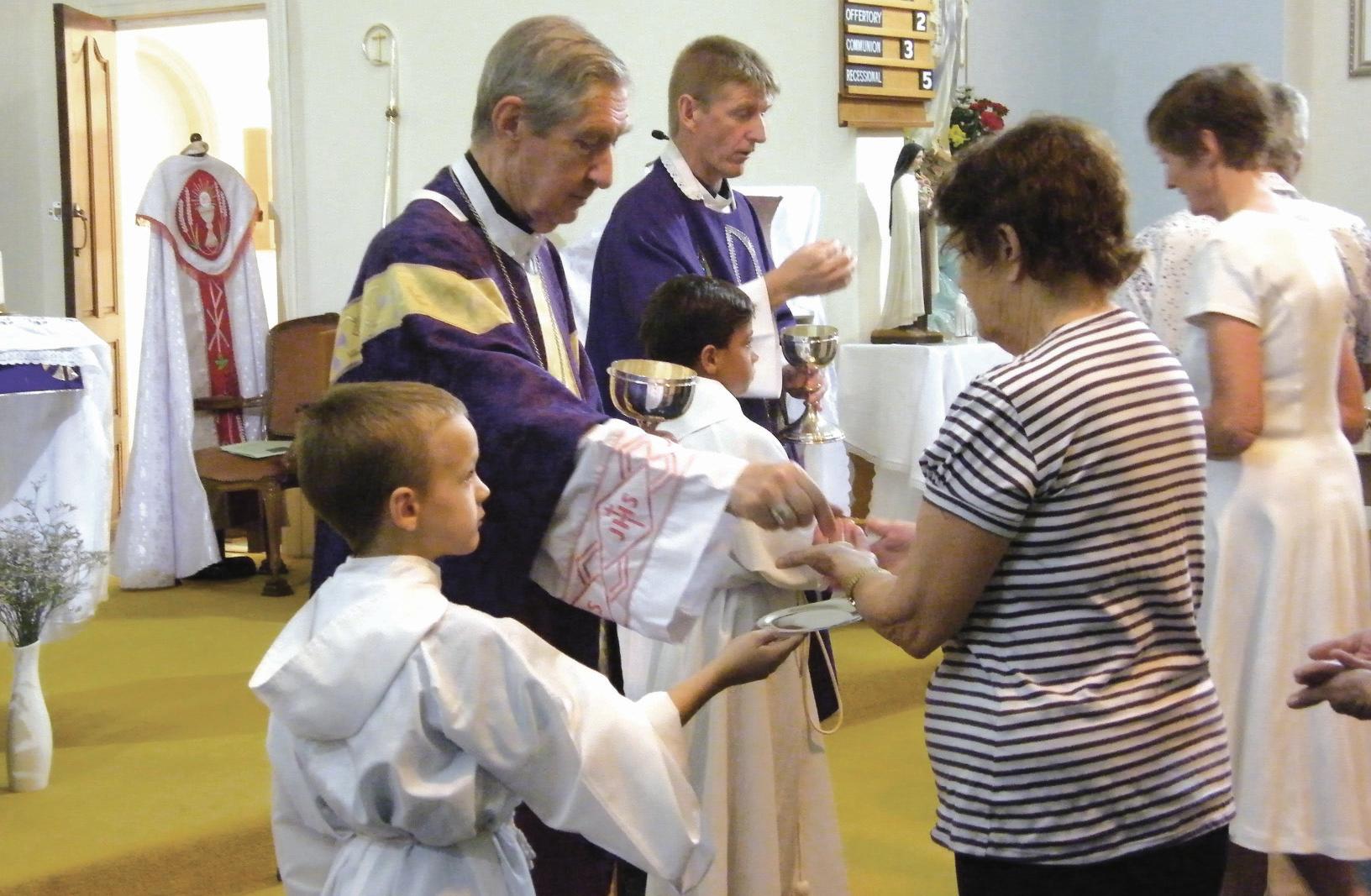

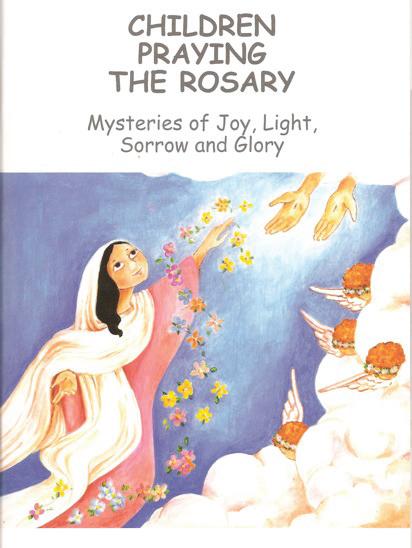

Sudla explaining the connection of the Jewish Passover and Exodus with Christ’s ultimate Passover and the Eucharist. He continued to explain the history and development of the Eucharist over the centuries and gave the reasons for changes, whether appropriate or not, that took place during the various centuries to the present day.
The final subject presented for the information of the group was the session on the new Missal. This stimulated some interesting discussion but the changes appeared to be generally well accepted.
“It would be have to be considered as an extremely interesting and rewarding day and an awakening and understanding of the true meaning of the word Eucharist,” the parish statement said.
“From various comments of the group, everyone enjoyed the day and Father’s presentation and knowledge was very impressive to all those present.”
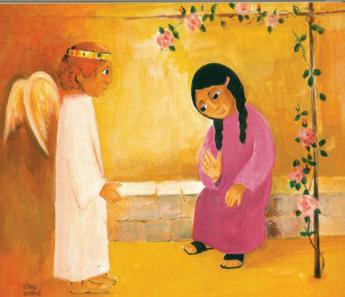

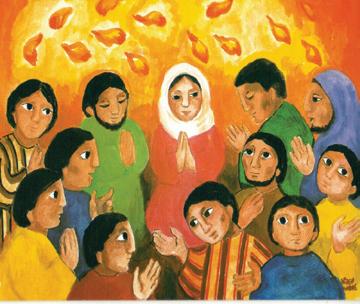


MORE than 100 parishioners at Holy Spirit Parish in City Beach consecrated themselves to Jesus through Mary on 25 March.
The consecration was made on the feast of the Annunciation of the Lord after Stations of the Cross.
Parishioners prepared for the consecration with 33 days of spiritual preparation. Though some found it tough and the language difficult, they persevered and gained spiritual benefits from the experience according to City Beach parish priest Fr Don Kettle.
During this time of reparation, parishioners reflected on the writings of St Louis de Montfort; praying and meditating on Scripture to internalise God’s Word and apply it to their daily lives.
St Louis de Montfort (1673-1716) was a French missionary priest and author who was renowned, influencing a number of Popes.
A year before his death, he founded two Religious congregations: the Company of Mary, composed of missionaries and the Sisters of Wisdom, who devoted themselves to hospital work and the instruction of poor girls.
Fr Kettle said it was a “truly wonderful experience as people were touched in a profound way as we gathered together under the protection of our Heavenly Mother as her Children.’’
Some offered their prayers for members of their own families who no longer practise the faith, while others offered prayers for the evangelisation of the parish.
‘’This whole experience has been a great blessing for the parish and families, of spiritual growth and support. Even now, Our Lady is still answering those prayers by interceding for her children,” Fr Kettle said.
He said he would encourage other parishes and individuals to take up the challenge.

Thurs 14, Fri 15 April, 7.30pm
Music Auditorium, ECU, 2 Bradford St, Mt Lawley
Tickets $23 Full / $18 Concession
WAAPA Box Office: (08) 9370 6817
The Faith Court Orchestra, under the direction of Peter Tanfield perform Shostakovitch’s glorious Symphony No. 9 and Johannes Brahms’ Symphony No. 4, a warm and fulfilling work, rich with allusions to Beethoven and featuring an adaptation of a Bach chorale and a chaconne as last movement.
For idle hearts and hands and minds the devil finds a work to do!
Thurs 21 April, 7.30pm
Heath Ledger Theatre, State Theatre Centre
Performed by WAAPA Classical Vocal students
Devised and directed by Rachel McDonald nd
Tickets $330 Full / $25 Concession BOCS (08) ) 9484 1133 or visit bocstickeeting.com.au
Stravinskyy’s operatic masterpiece re-imagineed in a workshop presentation, bringing this classic talle of debauchery and redemmption to life in the beautiiful surrounds of the new w State Theatre Ceentre. waapaa.ecu.edu.au


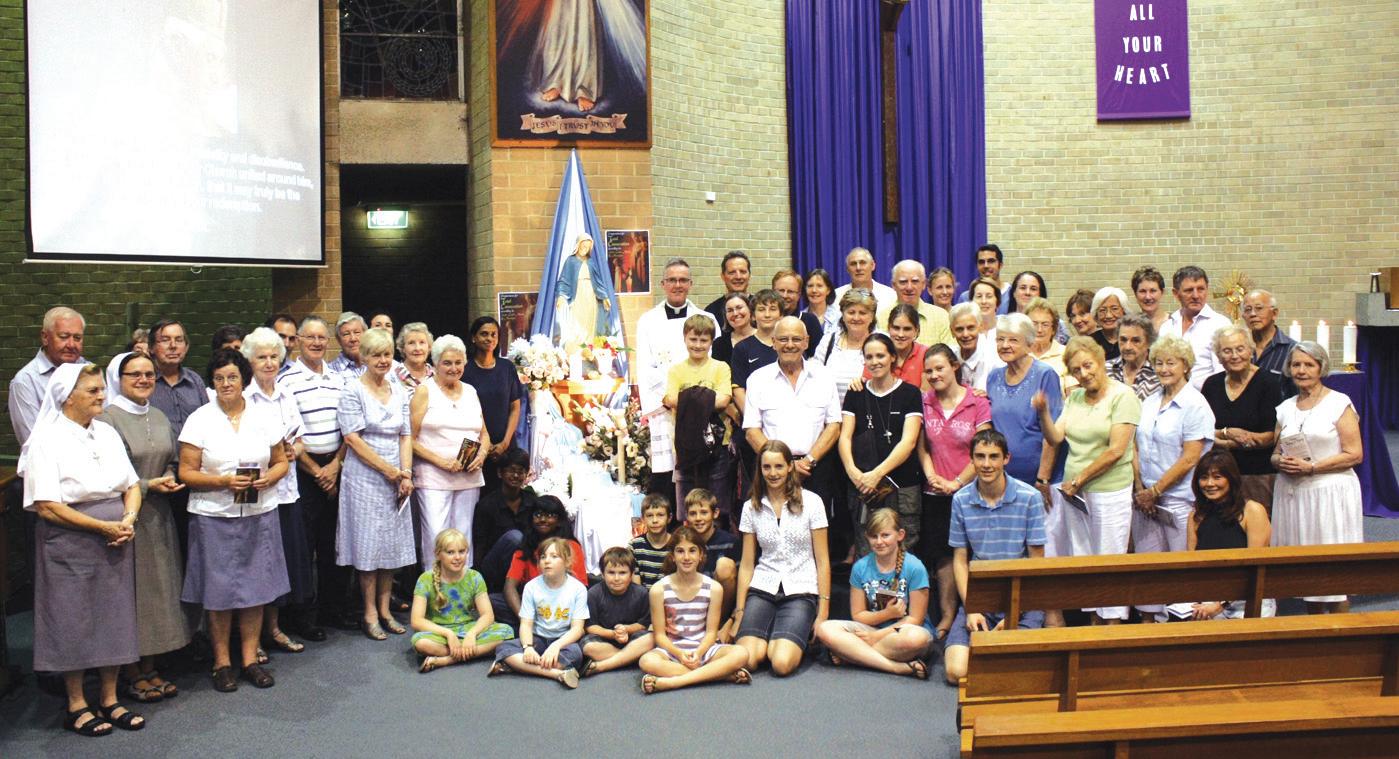
Continued from Page 1 allow them to operate effectively”.
The NCEC, which represents 1,700 Catholic schools with 704,000 students, 20 per cent of students in Australia, said funding should be on a 12 year legislative basis with four-yearly reviews.
In WA, there are 158 Catholic schools in WA with 71,000 students.
Despite the Catholic Church being the second-largest provider of education in Australia, the Catholic sector receives proportionally less than independent and government schools.
In 2009, the Catholic sector had the lowest net recurrent income per student everywhere except the NT, with $10,008 compared with $11,132 for the government sector and $13,711 for independents.
“We would argue that we do it effectively and efficiently because of large involvement with parents in their child’s education using
school boards etc, that we actually devolve decision making to school level where principals are employers,” Mr Dullard said. At a minimum, the NCEC said it wants no reduction in overall funding in real terms to enable Catholic Education to continue to provide high quality, ‘high equity’ education.
“We’re asking for more – about 62.5 per cent of the average cost of educating a child in a State school. Presently, it’s at about 58 per cent,” Mr Dullard said.
The new National curriculum to be rolled out by 2014 will also require extra funding to help teachers “get their heads around the content”. This is especially the case for early childhood learning and the changes in maths and science at Years 6 and 7. Students will need greater support from specialist teachers which they would otherwise receive in schools where Year 7 is now part of high school.
A coordinator has also been appointed to build cooperation and sharing of material across the Catholic, independent and government sectors to help implement the new curriculum.
The NCEC’s submission revealed that Catholic schools will need substantial funding in the nine years, detailing building needs to 2020 worth $2.26 billion for refurbishment and $2.39 billion for new school places which grow at three per cent annually.
The NCEC argues for ‘appropriate’, ‘meaningful’ and ‘coordinated’ accountability rather than simply ‘more accountability’, which it believes is a dangerous slogan being used by government bureaucrats.
The NCEC’s submission said Catholic schools are to a large extent able to overcome student socio-economic barriers to schooling success and produce high equity and quality outcomes when measured against international sample data.
Continued from Page 1 for easy access to safe and clean drinking water. The ‘LifeStraw Family’ version is even better because you can clean water for cooking or washing food too,” Cameron said.
“The LifeStraw Personal filters at least 700 litres (almost three years) of water, making it safe to drink, and only cost around $8 each for us to buy. The LifeStraw Family gives a family of five about three years or 18,000 litres of clean water, costing around $35 each.
“Both remove 99.999 per cent of bacteria and kill and remove 98.2 per cent of viruses found in water, which is why we think it’s so important we buy as many as we can.”
Iona’s classmates at St Joseph’s Catholic College, Albany generously donated $155 after hearing a talk about the LifeStraws and how they could save the lives of many children in Haiti.
The children were touched that they could give a child the gift of three years’ safe and clean drinking water for around the price of one McDonald’s Happy Meal.
Rather than stop there, the children have decided to make it their mission to fulfill at least one of the Corporate Works of Mercy by giving drink to the thirsty, and they

want to raise more money to buy more LifeStraw units to send to Haiti where the need is greatest.
“We want to go to shops and large companies to ask them for money to get LifeStraws for the children in Haiti and Africa; we want to let people know about how children our age in those countries are suffering and we can do something about it,” Cameron said.
His sister Iona added that by helping these poor children to get safe and clean drinking water, “we’re also becoming the best version of ourselves, which is just what God wants us to become.”
Tighean added: “I can get a safe drink of water any time I turn on a tap. I think Jesus would want me to share what I have with other boys and girls in the world.”
THE opening of a new Federal Government detention centre in Tasmania next month will revert the Apple Isle back to its colonial origins as a penal colony, Broome Bishop Christopher Saunders said.
Earlier this month, the Federal Government announced plans to build a $15 million centre to house up to 400 asylum seekers next month on a former rifle range owned by the Defence Department in Pontville, near Hobart.
“I find this a retrograde step and an added cause of shame for us all as a nation of people who desire to give everyone a fair go,” said the Bishop, chair of the Australian Catholic Social Justice Council (ACSJC).
“A caring and just response to refugees must look to see how quickly
they might be processed and how humanely they might be treated,” Bishop Saunders said in a statement on the Sydney Archdiocesan website.
The ACSJC has long been opposed to mandatory detention, as is the Australian Bishops’ Catholic Migrant and Refugee Office. Bishop Saunders said the Government’s promise of three months’ incarceration has been too easily broken, and that detainees have been held behind electric fences and razor wire for more than a year.
“There are real alternatives to locking people up and resources must be committed to the processing of refugees that meets that initial target of three months behind bars and no longer,” he said.
There are up to 7,000 asylum
seekers, at least 1,000 of whom are children, incarcerated in detention centres across Australia including at WA’s Curtin and Leonora centres. Minister for Immigration and Citizenship Chris Bowen said it would operate for 26 weeks, after which time detainees will be transferred to Wickham Point north of Darwin where a new detention centre to house 1,500 male asylum seekers is currently under construction. The Tasmanian site was home to refugees from Kosovo in the late 1990s.
Marist Asylum Seeker and Refugee Service coordinator Fr Jim Carty proposed Australia’s policy for Vietnamese asylum seekers in the 1970s as a template for today’s boat people problem. “That government policy was regarded as a
world class model of what to do with people who are displaced, whether they arrived by boat, plane or swam here,” he said.
“Back then, asylum seekers were processed quickly and provided with safe housing, freedom of movement once initial checks had been carried out, and given all the kinds of assistance such as English lessons and help with jobs to ensure they integrated into the community.”
Jesuit Refugee Services director Fr Aloysius Mowe said the government’s actions have not reflected its continued claim that detention is a measure of last resort and that asylum seekers are being held for the shortest possible time.
Fr Aloysius noted that the Gillard Government’s Universal Period
CAMPION College in Toongabbie, NSW will award a $5,000 Visiting Fellowship to encourage research in two specialised collections of its library that delve into the intellectual life of a key but little-known figure in Australian Catholic history.
The Fellowship is part of Campion College gearing up for the launch of its Centre for the Study of Western Tradition in August with initiatives to boost engagement in Christianity’s intellectual heritage and liberal arts.
The Fellowship will facilitate scholarship in a figure whose intellectual engagement with his faith is “of immense value to Australian Catholic history” - Rev Dr Austin Woodbury SM (1899-1979).
Woodbury, who has been described as a “combative personality”, founded the Aquinas Academy in Sydney, a school of philosophy aimed mainly at lay people teaching a strictly scholastic philosophy based on the teaching of Dominican Doctor of the Church St Thomas Aquinas.
The Fellowship will also delve into Reformation figure St Edmund Campion, who was martyred for rejecting Anglicanism and refusing to renounce his Catholic faith.
The Fellowship grant for travel and accommodation over six to eight weeks next year will result in a seminar/conference paper being published. The recipient will also be expected to give a seminar at Campion and a guest lecture to undergraduate students. The deadline for applications is 1 September.
The St Edmund Campion Collection covers scholarship in the history of Catholicism in the British Isles from Henry VIII to the mid-19th century, including 16th century martyrs John Fisher, Thomas More, Edmund Campion and Margaret Clitherow.
It also includes the Catholic
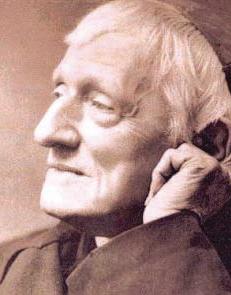
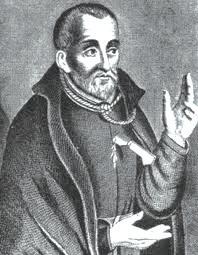
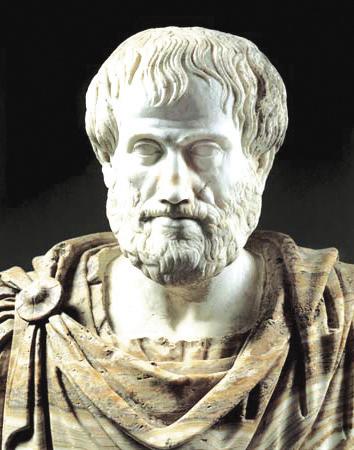
Emancipation Act of 1829 and the restoration of English hierarchy in 1850, including the works of Cardinal Nicholas Wiseman, the first Archbishop of Westminster.
Campion’s library has a separate collection of recently beatified Cardinal John Henry Newman, a convert from Anglicanism, which includes a substantial range of primary sources.
The Austin Woodbury Collection, the only one of its kind in Australia, consists of uncatalogued notes, lecture material and unpublished works by Woodbury and also includes his private collection of Thomistic theology and philosophy.
The Centre will also offer an annual $2,000 sponsorship to support a conference, symposium or workshop relevant to the Centre’s research strands: Christianity in Australia, the Emergence of the Mediaeval World View through the Scholarly Examination of Primary Sources in the Original Language, Liberal Education in the 21st Century, the Development of European Scientific Thought and the Conceptualisation of Democracy and Freedom in the West.
The College also convened a workshop, gathering some of Sydney’s sharpest minds from several universities on 10 December to discuss the notion that virtues like wisdom and the ability to think critically should form the foundation of broad-based undergraduate degrees.
This concept, key to Campion as Australia’s only Liberal Arts college, has been supported recently by Vice Chancellors including Glyn Davis of Melbourne University, Australian Catholic University’s Greg Craven, Ed Byrne of Monash University and Steven Schwartz of Macquarie University.
The speakers lamented the decline in university curricula of the humane studies that underpin the tradition of liberal arts and the vocationally-oriented courses that they instead offer.
A variety of views were also voiced regarding the direction that tertiary institutions should take: that liberal arts certainly are valuable to a well-rounded education and the fostering of intelligent and productive citizens, but their implementation outside of private institutions, such as Campion College, and in Australia’s public universi-
ties, is increasingly becoming less likely.
The workshop included Gregory Melleuish (University of Wollongong), Geoffrey Sherington (University of Sydney), Bruce Marshall (Macquarie University) and John Gascoigne (University of NSW) who are familiar with changes in universities in recent years.
Another project fostering students’ appreciation of one of Western history’s most important philosophical works, Aristotle’s Metaphysics, has also proven successful, with over 20 second and third year students already signed up for a reading group run by the Centre facilitated by Campion Philosophy lecturer Dr Amitavo Islam over the next few months.
The programme aims to provide upper-level undergraduate students with an opportunity to reflect in depth, in a scholarly manner and in front of an audience, on Aristotle’s work.
The reading group and workshop will take place yearly and will focus on a different text each year.
For info about the Fellowship of the Centre for the Study of Western Tradition email its director, Dr Luciano Boschiero, on l.boschiero@campion.edu.au.
HUNDREDS will gather this weekend (15-17 April) for the National Family Gathering Share the Dream at Xavier College in Kew, the third of its kind in Australia.
Pope John Paul II held the first World Meeting of Families in
Rome in 1994 and it has become an international event which takes place every four years.
Chair of the Bishops Commission for Pastoral Life, Bishop Eugene Hurley of Darwin, said that this event is extremely important for families, to inspire
and encourage them. “These events give people a sense that they are not alone in the world. Our culture can be very individualistic and we really want to affirm families”, said Bishop Hurley in a statement issued by the Australian Catholic Bishops
Review to the United Nations on 27 January, under the heading Rights of migrants, refugees and asylum seekers, outlined how it had closed asylum seeker processing centres on Nauru and Manus Island in 2007 and abolished Temporary Protection Visas.
The submission said that detention of asylum seekers was administrative in nature and not used for punitive or correctional purposes and that “detention in immigration detention centres is only to be used as a last resort and for the shortest practicable time.”
“There has to be a better way of doing this, and we believe that once these people have undergone health checks and some kind of security check, they be able to live within the community,” Fr Aloysius said.
AUSTRALIA’S national association of deacons has launched its own website to raise the profile of the permanent diaconate.
The National Association of Deacons (NAD) in Australia, an association of the National Council of Priests of Australia (NCP), launched the website www.ausdeacons.org.au on 23 February.
The website features several deacon profiles, including those of a Vietnam veteran, a military chaplain and a former religion journalist as well as Bunbury deacon Paul Gee.
Bishop Michael Malone, Chair of the Bishops’ Commission for Church Ministry prior to his resignation as Bishop of MaitlandNewcastle this month, said the diaconate fulfills a key role in the ministry of the Church and is an essential part of its structure.
“The ministry of deacons was restored as a permanent order within the Catholic Church, following the Second Vatican Council, as a ministry of humble service in the midst of the deacon’s threefold ministry of word, liturgy and charity,” Bishop Malone said in a statement issued by the Australian Catholic Bishops Conference.
Deacons baptise, assist at and bless marriages, give Viaticum to the dying and lead the funeral rites.
“Priests, Religious and deacons are present to people in quite extraordinary ways. They offer a ministry of presence to people, sharing their joys and sorrows, being a listening ear, a sympathetic shoulder, a support when things go wrong,” Bishop Malone said.
Conference. “These events are titled as such as we do dream of a society in which the family is held up as the most important institution and we want to encourage people to dare to have that, live that and share that dream”, he said.
By virtue of their ministry, deacons help the local Bishop to embody the Church’s call to service, Bishop Malone said, and are signs of Jesus who came ‘not to be served, but to serve’ (Matthew 20, 28).
Archbishop Barry Hickey also ordained 14 permanent deacons in 2006.
Cardinal John Henry NewmanSt Edmund Campion AristotleThe sky is not falling this coming Advent or early next year, despite what you may be hearing. What will happen is the implementation of a new translation of the Roman Missal. This translation is intended to bring the English more in line with the original Latin text and with the translations of other languages, which themselves generally hew closer to the Latin text.
Since there is nothing that a certain class of Catholic prefers more than a good row about the liturgy, this has become the occasion for a great deal of harrumphing. A rather creatively named organisation in the US - What If We Just Said Wait? - began gathering signatures from people who wanted to delay the translation. More recently, a number of articles have appeared in certain Catholic periodicals asking the US Bishops to bring the entire enterprise to a screeching halt.
One of the charisms of being Catholic is a willingness to complain about Church matters, so there is nothing new here. My only concern is that the criticism may diwstract from what can be an important catechetical opportunity: While the changing of words - even the changing of many words - does not mean that Catholics will become holier or their liturgies more sacred and inspiring, the truth is that words matter. The Church no longer uses just one human language in its daily discourse with God - that is, Latin. But as the one, holy, Catholic and apostolic Church, having the diverse tongues of the faithful speak as one is still a Pentecost moment of sorts, and the words that our Spanish, French or Italian co-religionists use should closely parallel those that we speak.
PO Box 3075 Adelaide Terrace PERTH WA 6832
office@therecord.com.au
Tel: (08) 9220 5900
Fax: (08) 9325 4580
One small example of this is the soon-to-be restored response, “And with your spirit,” to the priest’s “The Lord be with you.” Those of us who have a vestigial memory of the Latin Mass will remember the altar boy’s phrase, “et cum Spiritu tuo,” or as it sounded to my childish ears, ecomespiri tutu oh! If one attends a Spanish-language Mass, the phrase retains this sense: Y con tu espiritu. The translation that we have now - “and also with you” - is fine, but sounds a bit more casual: “Right back at you, Rev!” What many may not know is that the phrase “And with your spirit” has deep connections with our Catholic history. The point was driven home to me when my wife introduced me to a passage written by St Peter Damian 1,000 years ago. In an essay called “The Book of the ‘Lord be with You,’” St Damian was attempting to address the question of whether a hermit in his cell should say the response since there was no one else in the cell with him.
Writing in the 11th century, St Damian noted that when the priest says, “The Lord be with you,” he is invoking “the ancient authority of the Scriptures,” where it is used in several passages. Then he writes:
“When the Church receives the salutary greeting of the priest, she greets him in return, and in doing so prays that, as he has desired that the Lord may be with them, so He (God) may deign to be with him. ‘And with thy spirit,’ she replies, meaning: ‘May Almighty God be with your soul, so that you may worthily pray to Him for our salvation.’ Notice that she says not ‘with thee,’ but ‘with thy spirit’; this is to remind us that all things concerned with the services of the Church must be performed in a spiritual manner.”
St Damian addresses this at greater length, but what I find fascinating is that 1,000 years ago a saint was thinking about and expounding on this phrase, itself many more hundreds of years old. If the discussion and catechesis leading up to the new changes can help us appreciate the deep wellsprings from which our liturgy has flowed, we will be the richer for it.
This editorial first appeared in the 27 March issue of Our Sunday Visitor, a national Catholic newsweekly based in Huntington, Indiana. It was written by Greg Erlandson, president and publisher.
In the editorial of The Record, 30 March 2011, you ask the question; “Do the Baptised have any rights”? and rightly so. We are all members of Christ’s Body the Church and members of the priesthood of the laity according to Vatican II and, as such, we all have rights through our Baptism.
But I humbly ask who is depriving whom of their rights? You make the presumption that it is a group of faithful priests who belong to the National Council of Priests. These are men who have served Christ and our Church, in most cases for all their lives. They are men of prayer, steeped in the scriptures
Church. This is one of the reasons why there should have been grassroots consultation amongst all members of Christ’s Body in the English speaking world. However, the laity is still being treated like children, “pray, pay and obey” is still very much the attitude of the hierarchy towards lay people.
The trite answer to your question is that the Church is not a democracy but, in this day and age, monarchical behaviour is obsolete and not acceptable to the educated masses. Jesus did not create a monarchy but a movement of servants who would emulate His practices.
Why can we not all work in unity, having respect for each other’s God given gifts?
Bishops Kevin Dowling CssR of Rustenburg in South Africa and Donald Trautman of Erie in the US have had the courage to speak up and write some erudite criticisms of the methodology followed by Vox Clara. They are also very concerned that the various words, phrases and sentence structure of this new Translation may have a negative pastoral impact. These Bishops want to empower the faithful and be their companions on the journey, and not be paternalistic, distant and out of touch like the Roman Curia and many in the Hierarchy.
So I ask again who is depriving whom of their baptismal rights? To me and many others, both members of the clergy and laity are all being deprived of our rights because of no meaningful consultation by the translators. The fact that the translation is full of archaic and not easily understood words and phrases and very awkward literal translations from the Latin, adds to the concerns of many and the National Council of Priests. How can such a translation lead to a more meaningful and prayerful Mass? I only hope and pray it will not empty the pews further.
Patrick Durack Wembley
The debate on climate change and the factors that cause change is important and should be done without personal abuse. Peter Walsh (letters 6 April) should stick to the facts about what causes the climate to change and leave the nasty criticism to Members of Parliament.
The president of the World Federation of Scientists, Antonio Zichichi, emeritus professor of advanced physics at the University of Bologna and a member of the Pontifical Academy of Sciences, is adamant that human behaviour is not to blame for global warming.
In an address to an international conference on Climate Change and Development sponsored by the Pontifical Council for Justice and Peace in 2007, he made the assertion that human activity has less than a 10 per cent impact on the environment.


He also reminded the conference that 500,000 years ago the North and South Poles disappeared and reformed four times and that global warming is not caused by the increase of emissions of “greenhouse gases” produced through human activity.
Brian Peachey Woodlandst would be a pity to allow The Record to become a forum for the quasi-political issues that have little relevance to the spiritual and religious charter that we should expect from a Catholic publication.
Page 8 of the 20 March issue contains two such letters from correspondents, expressing view-points on current issues which would be more appropriate to the Letters column of our daily newspapers, in which contributors can, and do, vent their opinions on those of us who do not subscribe to their viewpoints, as being “gullible, greenies, leftists and sundry malcontents”.
Ironically, we may take some comfort from the accompanying Editorial in which some of us are categorised as ‘right wing and neoclericalist’ supporters. With our ‘own often out of date agendas –straight out of the 1970s’.
Yes! I can well recall those, and many preceding years, with the pews fully occupied for the Tridentine Mass, and well attended for such devotions as Benediction and personal confession. That was before the Liturgists took control of Pope John’s well-intentioned initiative and told us what we must discard, to whom we must pray, and the words we must use to pray.
I find little similarity of Jesus’ (outdated)? precepts from the Sermon on the Mount, nor with His preceding liturgist, Micah, who called all to “act justly, love tenderly and walk humbly with our God”.
Perhaps the pastoral role of the National Council of Priests of Australia has given them a closer understanding of the spiritual needs of their flock, than is available to those who comprise the Liturgy Commission.
Jack KeoghThree Springs
with a real pastoral outlook for the people they serve.
It is, I contend, because of their above attributes that many of them are very unhappy with this new translation of the Mass that is being handed down to us by a nonconsultative Curia and Hierarchy. Despite the claim that there was wide consultation, it was not with the vast majority who make up the Church, the Laity, and even the parish priests were not really consulted. So who is depriving whom of their baptismal rights?
For the first time in our Church, there is a highly educated laity not only in secular subjects but in sacred scripture and theology, who have experienced the Vatican II invitation to become enthusiastic and vital active members of our
He claimed that models used by the Intergovernmental Panel on Climate Change (IPCC) are incoherent and invalid from a scientific point of view and showed that the mathematical models used by the IPCC do not correspond to the criteria of the scientific method. He also said that the IPCC used “the method of ‘forcing’ to arrive at their conclusions that human activity produces meteorological variations.” And that on the basis of actual scientific fact, “it is not possible to exclude the idea that climate changes can be due to natural causes,” and that it is plausible that “man is not to blame.”
Professor Zichichi explained how the motor of meteorology depends on natural phenomena and gave as an example the “energy sent by the sun and volcanic activity that spits out lava and enormous quantities of substances in the atmosphere.”
In advancing many reasons for climate change, he appears to have missed the most obvious one; natural fluctuations which led to the Mediaeval Warm Period and the Little Ice Age. If the Arctic ice appears to be melting more quickly now, can he explain why Antarctic ice appears to be increasing in extent? I must, however, concur that the world is indeed changing; if only to differ as to the reasons why. He makes the mistake, in company with many others, of ascribing this change to ‘carbon pollution’. Of course, the term he should be using is carbon dioxide, a colourless, odourless gas which is anything but a pollutant. Is he aware, for example, that CO2 represents only 0.04 per cent of atmospheric gases; the global man-made content being about 3 per cent of this minuscule amount? Australia’s contribution is a paltry 1.5 per cent of these.
As to the credentials of those charged with selling the warming message to the public, did he know that Ross Garnaut is an economist, and the CEO of the IPCC, Dr Rajendra Pachauri - of AD 2045 Himalayan glacial melting ‘fame’is a railway engineer? Also, unless I’m mistaken, Tim Flannery is not a climatologist. One can but wonder at Patrick’s scientific credentials when he states that because 97 per cent of scientists support global warming we must do so as well. Science has never, until now, been about consensus; does he not realise that even if only one scientist is able to provide a valid objection to a hypothesis, it cannot be classed as a scientific principle? In this case, the 3 per cent who do not subscribe to the hypothesis consist of over 31,000 scientists which include 9,000 PhDs.
He would be waiting a very long time indeed to re-charge his electric car if all he had to rely on was wind or solar power. Not only are they light years away from supplying the major portion of base-load power to the grid but their cost is prohibitive, between 2-5 times the cost of electricity generated from coal or oil fired power stations.
Even in the absence of the points made above, to demand that Australia take action in this matter while most countries, including the three largest emitters USA, China and India, do nothing is tantamount to economic suicide.
Dunstan Hartley
Dianella
Got something to say? Send a letter to the Editor! See contact details in thr editorial column on this page.
For someone who is critical of those supplying information regarding global warming, Patrick Walsh (Letters, 6 April 2011), in true ‘hockey-stick’ fashion, is more than a little guilty of ‘cherry-picking’ data himself. So what if 2010 was the hottest year, and the last decade the hottest on record? In terms of the history of the earth, this period merely represents the blink of an eye. Over the long haul, global temperatures, especially those supplied by satellites in recent times, show no evidence of dangerous variations.




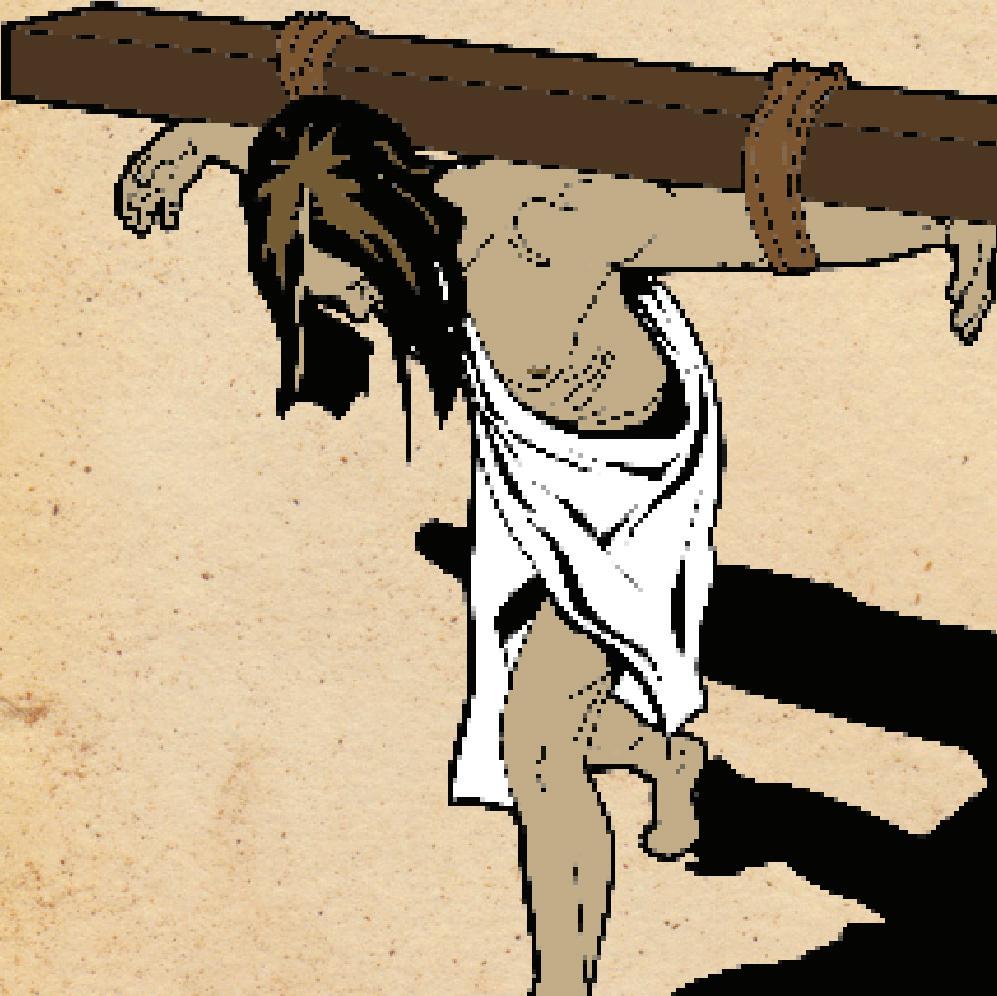

The upright post used for crucifixion, in Latin called the stipes, was generally permanently fixed in the ground at the site of execution. The victim carried the crossbar, or patibulum, to the site of crucifixion where the executioners would secure the crossbar to the upright post.


Jesus, you stand all alone before Pilate. Nobody speaks up for you. Nobody helps defend you. You devoted your entire life to helping others, listening to the smallest ones, caring for those who were ignored by others. They don’t seem to remember that as they prepare to put you to death. As a child, sometimes I feel alone. Sometimes I feel that others don’t stand up for me and defend me when I am afraid. Sometimes I don’t feel like I am treated fairly, especially if I am scolded or corrected. As an adult, sometimes I feel abandoned and afraid as well. Sometimes I too, feel like I am treated unfairly or blamed for things unfairly. I have a hard time when people criticise me at home or at work. Help me be grateful for what you did for me. Help me to accept criticism and unfairness as you did, and not complain. Help me pray for those who have hurt me.



Jesus, as you accepted your cross, you knew you would carry it to your death on Calvary. You knew it wouldn’t be easy, but you accepted it and carried it just the same. As a child, sometimes I don’t like the problems that come my way. Sometimes I try to get others to take care of them or solve them for me. Sometimes I become upset and crabby when I’m asked to do even the smallest thing to help others. As an adult I sometimes feel like I’m not appreciated. Sometimes I feel as if I accept more responsibility that I need to. I can feel sorry for myself, even though the crosses others carry are much larger than my own. In my self-pity, I don’t reach out to help. My Jesus, Who by Thine own will didst take on Thee the most heavy cross I made for Thee by my sins, oh, make me feel their heavy weight, and weep for them ever while I live.





Jesus, the cross you have been carrying is very heavy. You are becoming weak and almost ready to faint, and you fall down. Nobody seems to want to help you. The soldiers are interested in getting home, so they yell at you and try to get you up and moving again. As a child, sometimes I start to do something, but then get tired of it. I hurry to get finished and sometimes don’t do my work well. Sometimes I don’t pay attention to what I should be doing. When things get hard for me, sometimes I give up. As an adult, I sometimes put things off. I give up too easily, and sometimes don’t do my work as well as I know I can. My Jesus, the heavy burden of my sins is on Thee, and bears Thee down beneath the cross. I loathe them, I detest them; I call on Thee to pardon them; may Thy grace aid me never more to commit them.





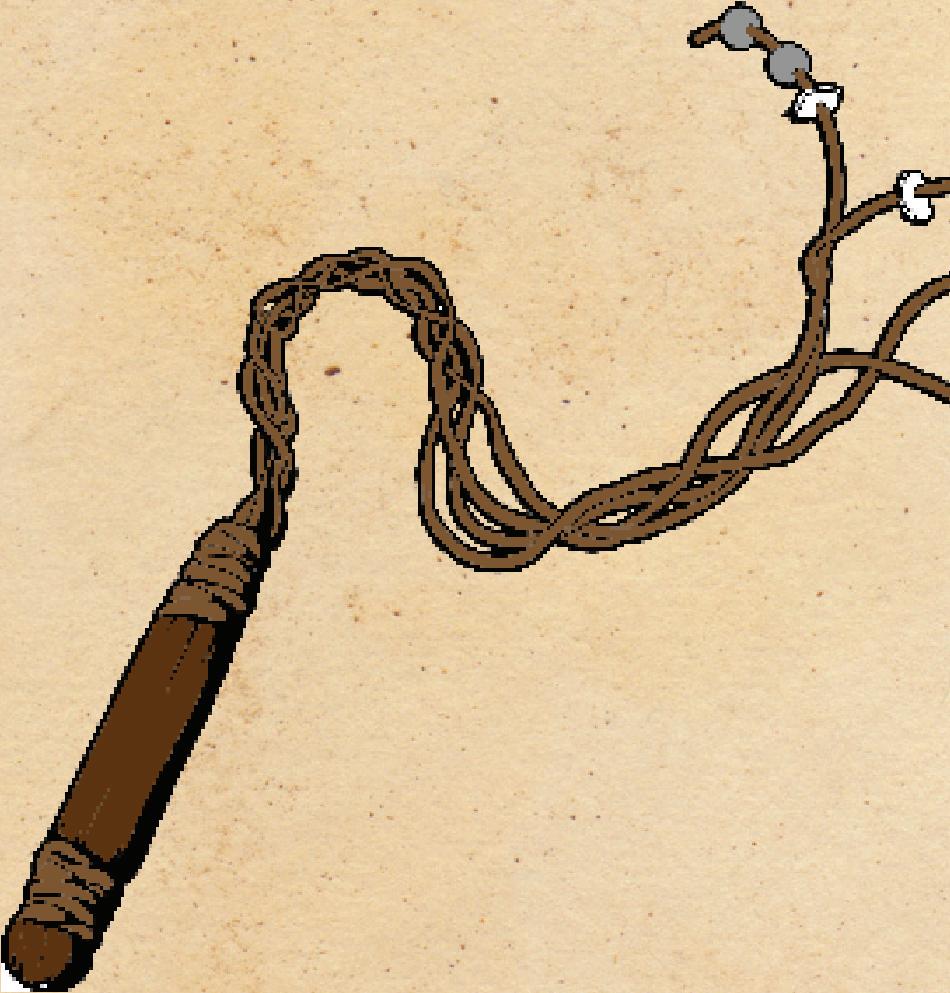



The flagrum, or flagellum was a whip with several single, or braided leather thongs of different lengths. Small iron balls, or sharp pieces of sheep bones were tied in the thongs.

Jesus, you feel so alone with all those people yelling and screaming at you. You don’t like the words they are saying about you, and you look for a friendly face in the crowd. You see your mother. She can’t make the hurting stop, but it helps to see that she is on your side, that she is suffering with you. She does understand and care. As a child, sometimes I feel like too many things are going on. Sometimes other kids pick on me and call me names. I need to look around me for a friendly face, and for the help I need. I need to share my troubles with those who truly care about me. As an adult I sometimes feel overwhelmed by many things. Life is so competitive, and I worry so much about my future and those who have some control over it. I need to remember that being an adult does not mean having to solve every problem all by myself. I need to look around me for a friendly face, for the help I need.




Jesus, the soldiers are becoming impatient. This is taking longer than they wanted it to. They are afraid you won’t make it to the hill where you will be crucified. As you grow weaker, they grab a man out of the crowd and make him help carry your cross. He was just watching what was happening, but all of a sudden he is helping you carry your cross. As a child, sometimes I see people who need my help. Sometimes I pretend not to hear when my parents call me. I disappear when I know others could use my help. As an adult, sometimes I try to do as little as I can and still get by. Others might need my help, but I ignore their needs. Even when I’m asked to help, I sometimes claim to be too busy. My Jesus, blest, thrice blest was he who aided Thee to bear the cross. Blest too shall I be if I aid Thee to bear the cross, by patiently bowing my neck to the crosses Thou shalt send me during life. My Jesus, give me grace to do so.





Jesus, suddenly a woman comes out of the crowd. Her name is Veronica. You can see how she cares for you as she takes a cloth and begins to wipe the blood and sweat from your face. She can’t do much, but she offers what little help she can. As a child, sometimes I know someone could use a little help and understanding. They may be picked on or teased by others, or just sad or lonely. Sometimes I feel bad that others don’t step in to help, but I don’t help either. As an adult, I notice the needs around me. Sometimes my own family members crave my attention, and I don’t even seem to notice. Sometimes a co-worker, friend, or family member could use help or understanding, but I don’t reach out to help lest I be criticised, or that they demand more of me than I’d like to give. My tender Jesus, Who didst deign to print Thy sacred face upon the cloth with which Veronica wiped the sweat from off Thy brow, print in my soul deep, I pray Thee, the lasting memory of Thy bitter pains.


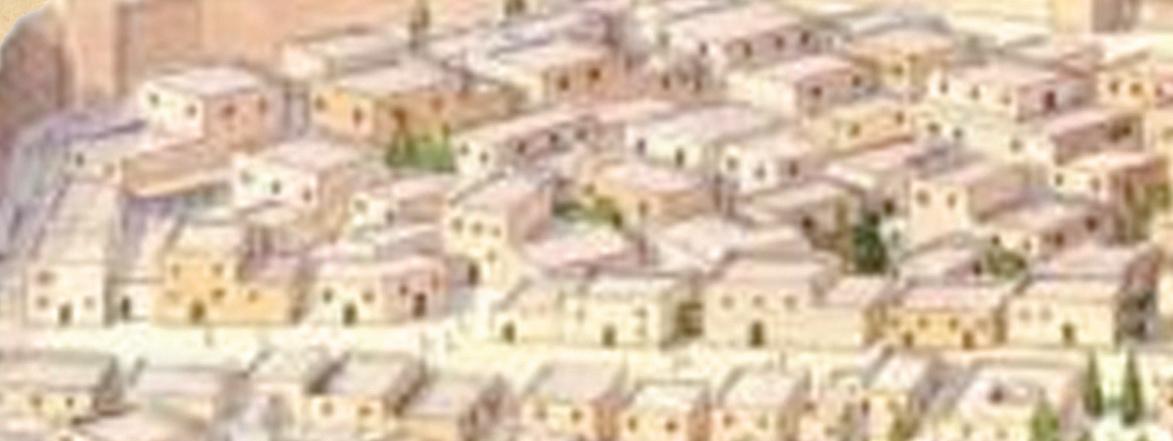




This is the second time y becomes more difficult to again. You don’t give up. easier to do or to learn. E think I should know more in myself when I fail. It is things seem difficult for Help me do my best with often, by sin, beaten Thee of grace that I may never


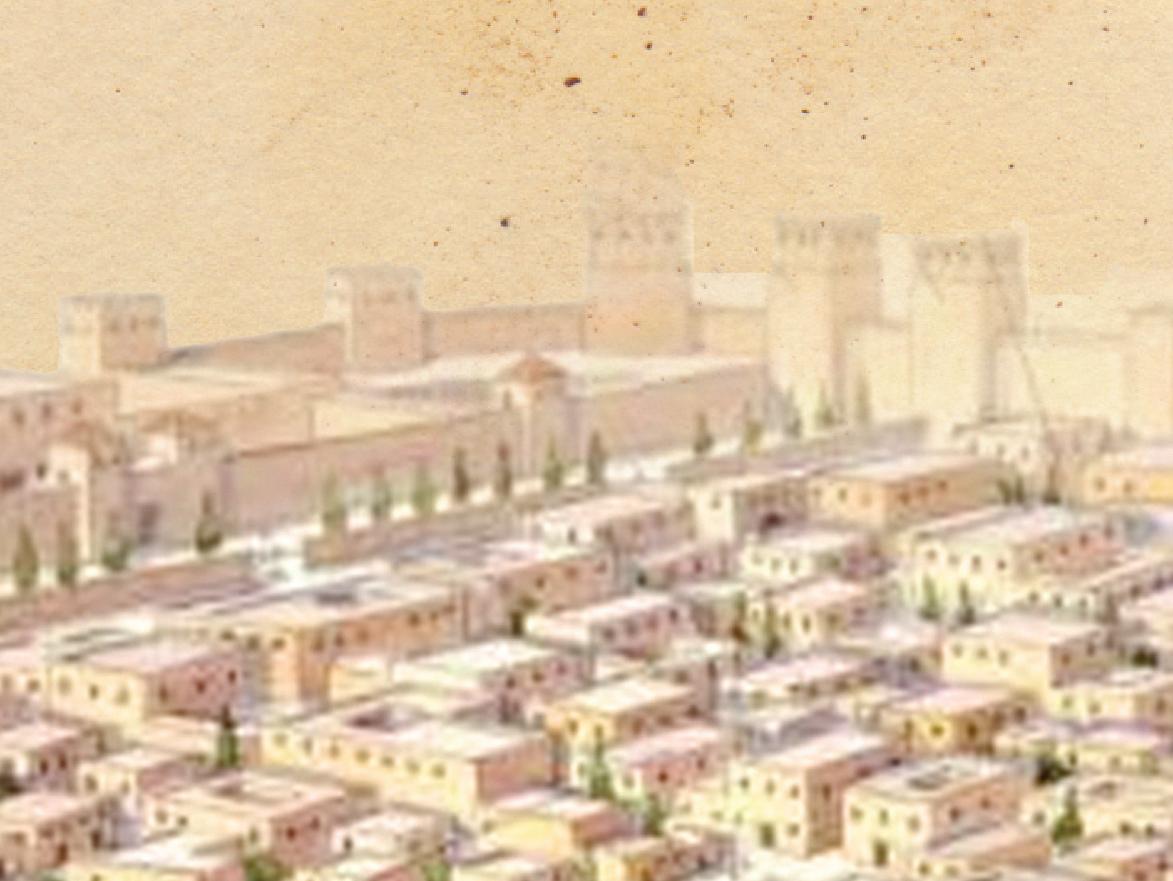

see they are sad. You stop Although you are have be them. As a child, someti like people to spend thei so absorbed in myself an granted, and often ignor that others have problem with my own problems. M to see Thee bruised and t May my heart ever answ
y This is th cond time o be beco c me m mo more e d dififfificcuult t t ag agai ou d donn’t t g givive e up p o ea t to o o or r to l leaearn rn s e thhinnk k I shhouuld ld k knonow w mo more r t s in n m mysselelf f wh when n I f faiail. l I It t is i i seem difficult for h Help m me e do m my y be best st w wit t e of ofteten, n by i si s n, b beaeateten n Th T ee e r of g grrace t thahat t I ma m y ne neve ve Je rr y your se s th ad d Yoou u sttop o e h e Al Alth gh re h havave e be b h g e i th h ld, somet i liike k pl l pe pend nd t the he e n so s bs b be b d m mys y ellf f an o r gr d d ften igno m th th ha h ve p prooblblem e h M wi w th h o obblems m i t he br b d and h M my m heaeart r evever an a sw w

Below is an artist’s draw Jerusalem was like in the yea is a map of Jerusalem 33AD regions of the Passion of Jes



ou have fallen on the road As the cross grows heavier and heavi ge get t up Buut t yo you u co contntininue ue t to o st struuggggle le a and nd t try y r u untntil il y youou’r’re e up a and nd w wal l As A a c chi h ld ld, , so somemeti t me mes s thhin i gs g get t m me e do d wn w Ot O he hers rs s seeeem m to f finnd d th h t Eaach ch t timime e I faail i , I fi f nd i it t haard r er e t to o keeep ep t tryyinng. g A As s an a adu d lt lt, , so s me metitim u e t thahan n I do do. . I be b co c me m i imp m at a ieent n w witth h m myseself lf a and nd f finind d it h harard d to b bel el e e e easasy y to o d desespa p ir o ovever r sm smal a l th thiningss, , annd d soommetimemes s I do d Heelp p m me e w a eti H me Even when it ’s hard, me get up and tr ying as you ho t ut u c comompapariring ng m mys y el elf f wi with th o othherers. s M My y Jeesusus, s o oft f en h havave e I si sinnnned d s e to o th the e gr grou o nd n b benneaeath th t the he c croross s Help m me e to u use se t the h e efffficicac a io ious u m me u e e fa f ll l ga g l
you have fallen on the road. As the cross grows heavier and heavier it get up. But you continue to struggle and try until you’re up and walking As a child, sometimes things get me down. Others seem to find things Each time I fail, I find it harder to keep trying. As an adult, sometimes I e than I do. I become impatient with myself and find it hard to believe easy to despair over small things, and sometimes I do. Help me when me. Even when it’s hard, help me get up and keep trying as you did. hout comparing myself with others. My Jesus, often have I sinned and e to the ground beneath the cross. Help me to use the efficacious means fall again.




Jesus, your journey has been long. You fall again, beneath your cross. You know your journey is coming to an end. You struggle and struggle. You get up and keep going. As a child, sometimes I fail time and time again. I find it hard to get along with my sisters and brothers, sometimes I’m not honest, sometimes I’m lazy. I’m tempted to stop trying. It’s just too hard sometimes. As an adult, I often feel I should have conquered my weaknesses by now. I become discouraged when I’m confronted by the same problems over and over again. Sometimes I get weary. When I have health problems, I can become discouraged and depressed. Help me think of the cross you carried. Help me continue to hope that I can make the changes in my life I need to. You didn’t give up. I can have the strength to get up again as well.

cross you see a group of women along the road. As you pass by you p t to o sp spenend d a mo mome m nt w witith h th them e , to o o offffer er t thehem m so some me e encncoouuraragegemement nt een e a aba b nddononed ed by yoour ur f fririenends d a and d a are re i in n pa painn, , yo you u st stop o a and d t try y t to o help y p n r mes I think a lot about myself I think about what I want and would ir r l livives es p pleleas a inng g me m As A a an n addul u t, t s sommettimimes es I a act c t l likike e a ch chilld. d I b beccomome e i a d wh w at I I’d ’d l likike e th that at I f for o ge get t ab abouout t th the e ne neededs s of o o othther e s. s I t takke e th t e em f for o r r a re their needs me think more about others me remember ms, s, t too o Heelp p m me e reespponnd d to t t the h m evven en w whehen n I’’m m bu b sy o or r pr p eo e cc ccup u ieed d s o o My J Jessuss, , Wh Who o di d ds dst t coomfmfor or t th the e pi piou o s wo womemen n of f J Jererususal a em w who ho w wept t toornrn, coomf m or o t my s sououl l wi with h T t tennde d r pi p ty t y, , fo for r in n Th p pit t y li lies es m my y trrus u t. t f r t hy er Thihine n
cross you see a group of women along the road. As you pass by you p to spend a moment with them, to offer them some encouragement. een abandoned by your friends and are in pain, you stop and try to help imes I think a lot about myself. I think about what I want and would ir lives pleasing me. As an adult, sometimes I act like a child. I become nd what I’d like that I forget about the needs of others. I take them for re their needs. Help me think more about others. Help me remember ms, too. Help me respond to them even when I’m busy or preoccupied My Jesus, Who didst comfort the pious women of Jerusalem who wept torn, comfort my soul with Thy tender pity, for in Thy pity lies my trust. er Thine.



Pilate finally handed over Jesus for scourging at Fortress of Antonia and for crucifixion at Golgotha.


Herod returned Jesus to Pilate.


wing of what ar 33AD. Right D and the main sus.
After first trial before political Sanhedrin at Caiaphas’ residence, Jesus was tried again before religious Sanhedrin, probably at Temple.

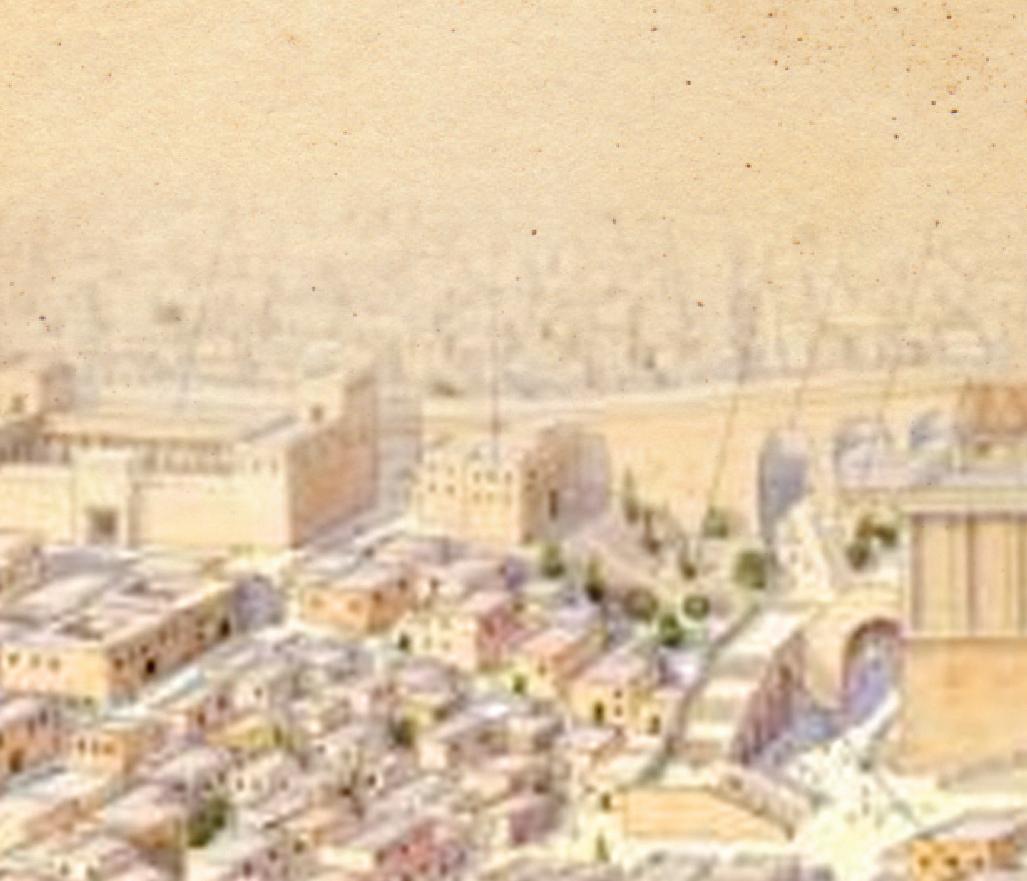

The soldiers notice you have something of value. They remove your cloak and throw dice for it. Your wounds are torn open once again. Some of the people in the crowd make fun of you. They tease you and challenge you to perform a miracle for them to see. They’re not aware that you’ll perform the greatest miracle of all! As a child, sometimes I’m tempted to repeat stories I know are unclean and disrespectful. I sometimes try to act grown up by using crude and bad words. As an adult, sometimes I repeat stories that are disrespectful of others. I can entertain thoughts that are not clean. Sometimes I give the young people around me a bad example to follow. Help me to keep myself pure and clean. Help me say things that build up the people around me. Help me overcome worldly desires that I may become more like Jesus. Help me set a good example for others to follow.

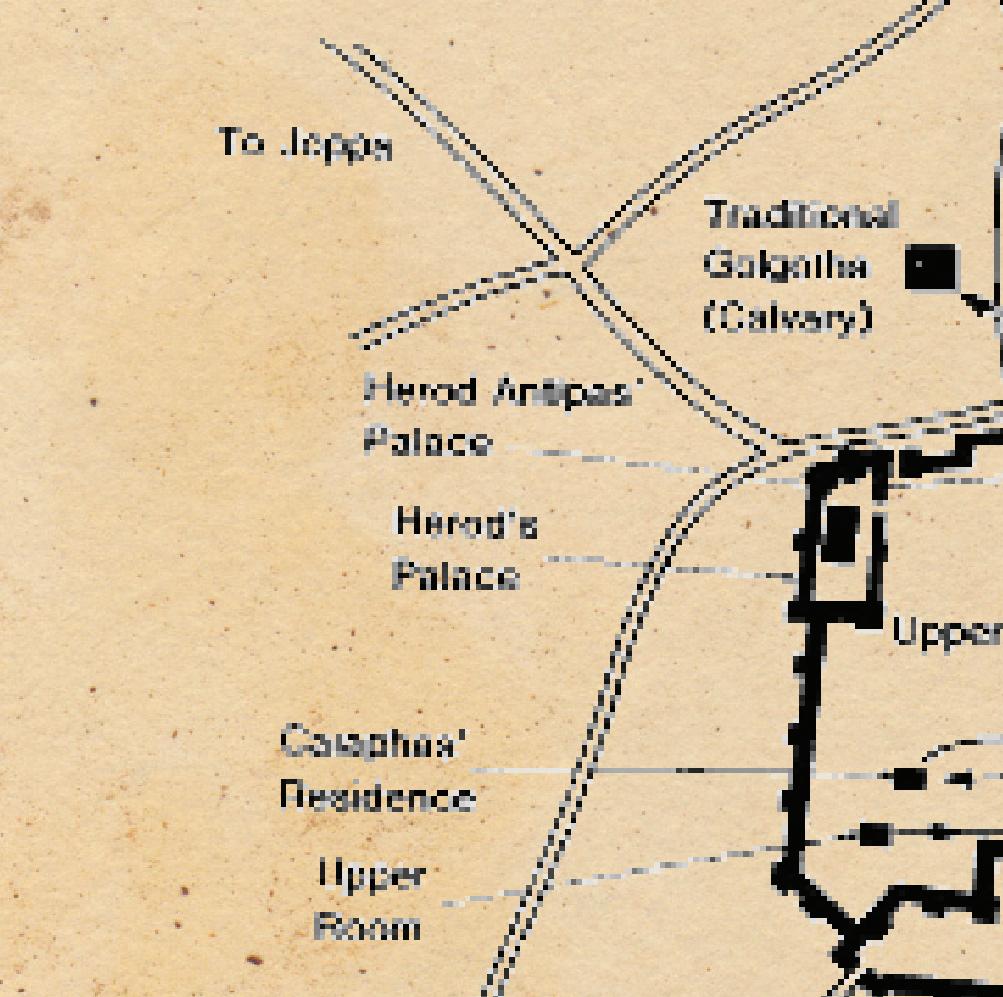

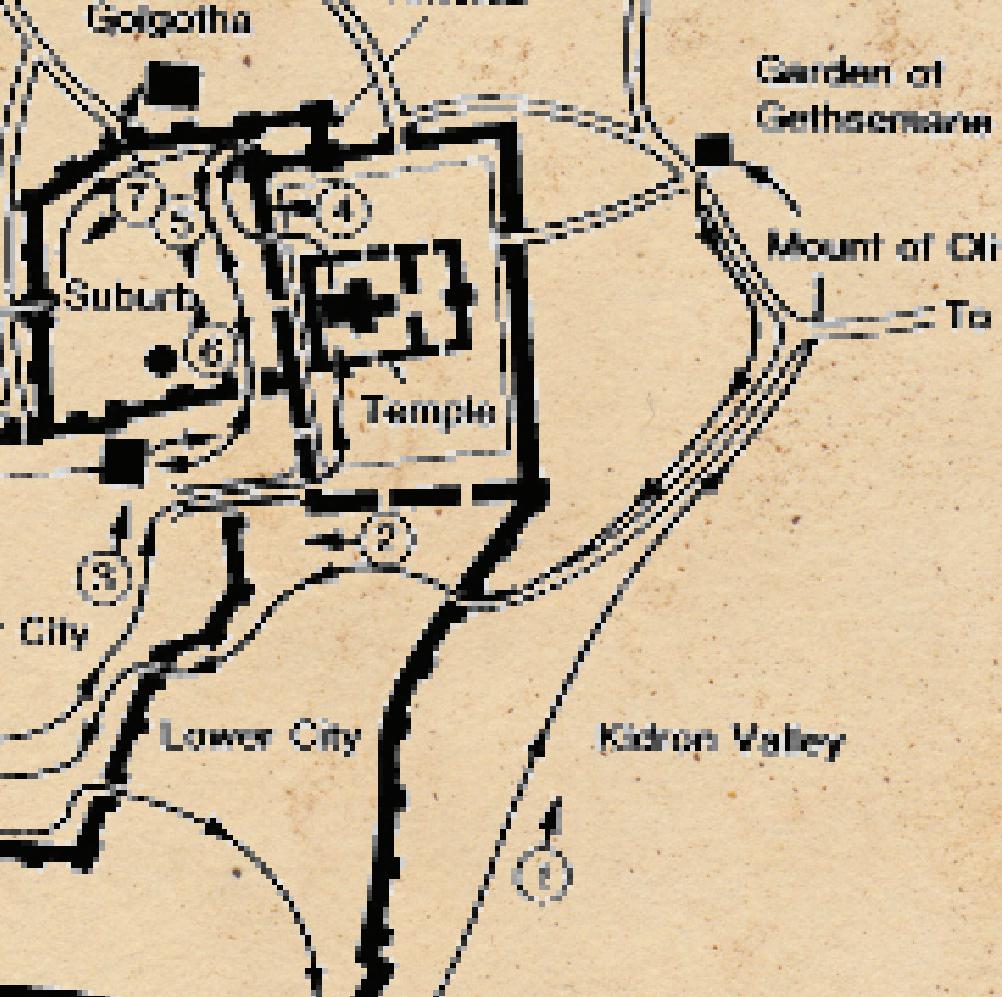









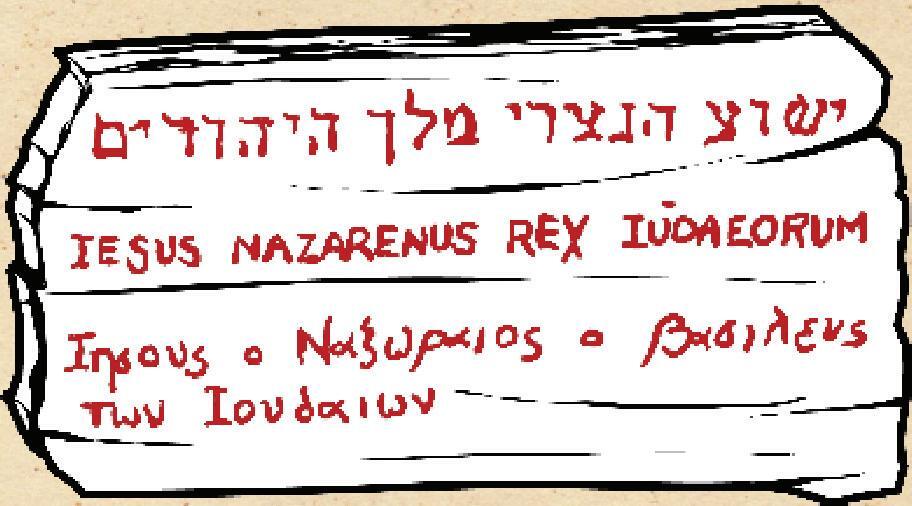



Although the feet could be fixed to the sides of the stipes or to a wooden footrest (suppedaneum), they usually were nailed directly to the front of the stipes.
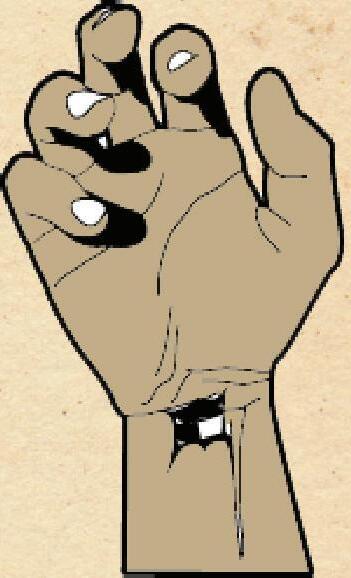


It’s documented that the nails commonly were driven through the wrists rather than the palms.
h r






The titulus , carried by a Roman soldier and attached to the cross, would have appeared similar to the drawing, left. The words are in three languages: Hebrew, Latin, and Greek, and mean, “Jesus the Nazarene, King of the Jews.”
c to t the he n th threree e Gr Gree e k, k e, , Ki K ng g
The nails were tapered iron spikes approximately 5-7in (1318cm) long with a square shaft 3/8in (1cm) across.

You are stretched out on the cross you have carried so far. The soldiers take big nails and drive them into your hands and feet. You feel abandoned by the people you loved so much. People seem to have gone mad. You have done nothing but good, yet they drive nails through your hands and feet. As a child, sometimes I hurt others. Sometimes I join with friends and decide not to like another. We gang up against another and cause them hurt and pain. Sometimes I say or do hurtful things to my brothers and sisters. I can wonder what they’d think about themselves if they believed everything I told them about themselves. As an adult, sometimes I discriminate against others. Even without thinking, I judge others because of their colour, intelligence, income level or name. I forget that I am to live as a brother or sister to all people. Sometimes I use harsh words when I speak to my children and family members. I can find it easy to look for something that isn’t very important and make it very important.


As Jesus hung on the cross, he forgave the soldiers who had crucified Him, and prayed for His mother and friends. Jesus wanted all of us to be able to live forever with God, so He gave all He had for us. Jesus, let me take a few moments now to consider your love for me. Help me thank you for your willingness to go to your death for me. Help me express my love for you! My Jesus, three hours didst Thou hang in agony, and then die for me; let me die before I sin, and if I live, live for Thy love and faithful service.
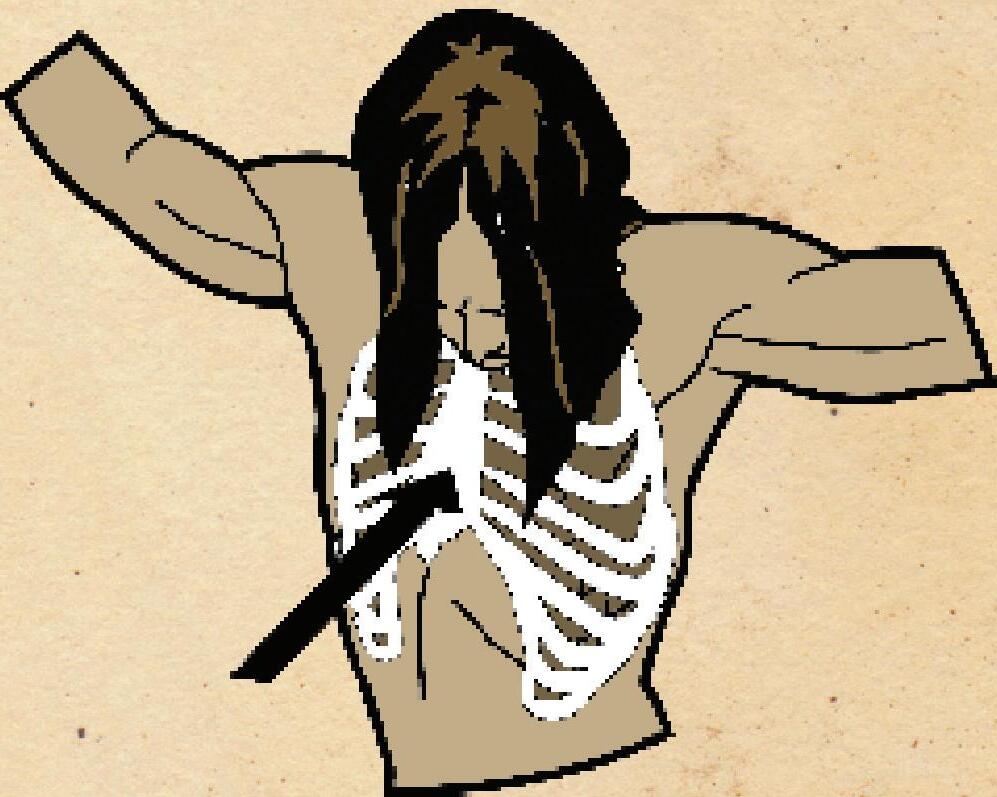

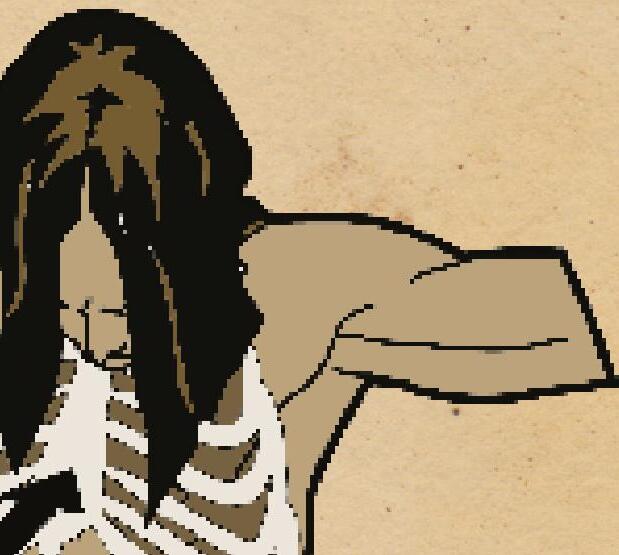

XJesus, how brutally you were put to death. How gently your are taken from the cross. Your suffering and pain are ended, and you are put in the lap of your mother. The dirt and blood are wiped away. You are treated with love. As a child, sometimes I treat others better when they’re sad or in pain. When somebody dies, I become very gentle and kind. I notice the good and kind things people say about those who have died. As an adult, I seem to be kinder when someone dies. If only I could learn to see the good things about them while they were alive. If only I would tell those around me how much I love them, while I still have the opportunity to do so. Help me look for the good in those around me, especially those I love the most. Help me live this day as if it were the last. Help me become a more gentle and loving person through my greater appreciation for those around me.


the o u l d w i t h n c e . h a s s a t h e ighght t
By custom, one of the Roman guards would pierce the body with a sword or lance. Traditionally, this has been regarded as a spear wound to the heart through the right side of the chest.

Jesus, your body is prepared for burial. Joseph gave you his own tomb. He laid your body there and rolled a large stone in front of it, then went home. What a sad day it has been for so many people. As a child, sometimes I try to keep everything for myself. I find it hard to share my things with my brothers or sisters and with my friends. As an adult, I can be selfish too. I can accumulate things and keep them for myself. I try to make sure I have what I want before I share what I have with anybody else. Help me think of Joseph of Arimathea, who risked his own life as he accepted Jesus’ body for burial. Help me think of how Joseph loved Jesus so much that he gave him his own tomb. My Jesus, beside Thy body in the tomb I, too, would lie dead; but if I live, let it be for Thee, so as one day to enjoy with Thee in heaven the fruits of Thy passion and Thy bitter death.
Reflections courtesy of Catholic Online
As a euthanasia bill moves stealthily through South Australia’s Parliament, Perth bioethicist and moral theologian Rev Dr Joseph Parkinson assesses whether society really needs such a bill
In Don Dunstan’s time, the State of South Australia prided itself on blazing a trail in social and cultural progress, and nothing seems to change in South Australia.
SA State Premier in the 1970s, Dunstan was famous for reducing South Australia’s crime statistics by the simple expedience of de-criminalising behaviours that proved too difficult to enforce by law.
In one fell swoop he reduced the workload on police and created the illusion of a safer society merely by having Parliament arbitrarily (and somewhat cynically) redefine the boundaries between acceptable and unacceptable behaviour.
While this proves that what the law considers acceptable can be changed by political fiat, it in no
way affects whether a behaviour is ethically or morally good or bad. That depends on the nature of the behaviour in itself.
South Australia’s Criminal Law Consolidation (Medical Defences – End of Life Arrangements) Amendment Bill 2011 is deceptively simple in both title and content.
It proposes to create new legal defences against one person intentionally killing another, a behaviour which up to now has always been considered unacceptable.
The Bill offers no rationale to justify such a radical social change: the people of South Australia are asked simply to accept that what has until now been unreasonable is henceforth to be considered reasonable, and therefore a defence against criminal charges, on the rather flimsy grounds that “Parliament intends that conduct bringing about the end of a person’s life is a reasonable response to such suffering in exceptional circumstances” [S13 (B) 5].
Like most other attempts to legalise euthanasia, this Bill places all of the onus on the medical profession, which until now has claimed for itself the ethical high ground.
Doctors have long prided themselves on the fact that their profession is sworn to heal and to help, and never to end a patient’s life deliberately even if the patient requests it.
But this Bill would allow a doctor to help a patient to end his or

her own life by creating a defence against a charge of ‘assisting suicide’, even in the absence of any clear request from the patient: an ‘implied’ request for help is sufficient.
Since they place such trust in the legislative process, one wonders how that State’s politicians can possibly approve so nebulous a defence.
In all likelihood, it will come down to lawyers and judges to decide what does or does not constitute an ‘implied request’, which rather defeats the Bill’s intention to bring clarity to a very difficult medical and ethical question.
One also wonders why only doctors are afforded this legal protection. Why not parliamentarians? We elect these people to make our laws, why not trust them to apply
the law as well? If this is an absurd proposition when referring to parliamentarians, why is it not absurd when referring to doctors?
Perhaps most concerning of all is the condition that both euthanasia and assisted suicide are acceptable if the patient forms the view that his or her life has become ‘intolerable’.
Failure to distinguish between an ‘intolerable pain’ and an ‘intolerable life’ serves only to cloud the real issue.
Life may be difficult because of intolerable pain, and indeed a person might legitimately prefer to die rather than continue living in great pain, but a more reasonable response of a civilised society would be to spend every effort trying to kill the pain, not to kill the patient.
And so the Bill’s focus falls not on what the medical profession can already achieve by excellent palliative care, nor on what medical science might reasonably be expected to achieve if more resources are given to research.
It falls on an activity which, until now, the medical profession has steadfastly refused to accept as legitimate medical practice.
True, the Bill allows that palliative care may not be able to relieve a person’s suffering to a level acceptable to the person, but that only demonstrates its own internal contradiction: the Bill commits an entire State to accept by law an action whose lawfulness depends
entirely on the arbitrary decision of a single person.
I can’t think of any other instance where this applies.
Failure to distinguish between ‘pain’ (which can be quantified to some degree) and ‘suffering’ (a much broader concept) only serves to further obfuscate what the Bill sets out to clarify.
This latest attempt at ‘social engineering by law’ entirely fails to recognise that ultimately the ability of our legal system to bind us to avoid certain behaviours rests not on the preferences of this or that individual, even if that individual is an elected member of Parliament, nor even on the cumulative preferences of everyone in that society.
It rests on moral and ethical standards which express the absolute dignity of every individual person in every society, absolute respect for which is an essential requirement for mutual human flourishing.
Christians may be more used to thinking and talking about this dignity in terms of ‘being created in God’s image and likeness’, but in our Catholic tradition we also hold that this truth is evident to any person who tries to think objectively about what it means to live in human society, and who sets about creating the conditions best adapted to enable that to happen.
Whether by legislation or otherwise, we trade off this dignity at our peril.
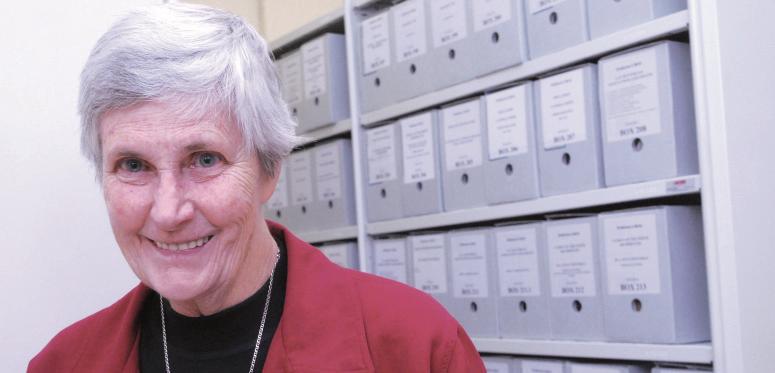
As St John’s ProCathedral is closed for renovations, Archdiocesan Archivist Sr Stibi, who is organising the restoration, looks at its fascinating history
On the Feast of St John the Evangelist, 27 December, 1843, building commenced on the Church of St John the Evangelist with the turning of the first sod, on land granted by Governor Hutt. This land was designated Perth Lots C9, 10, 11. The foundation stone was laid on 16 January 1844. The building was completed in June 1855. A portico was added by 31 May 1856.
In 1844, Government Blue Book recorded the construction of the Roman Catholic Chapel, Perth at a cost of £500.
The building was executed under the authority of the Trustees of the Roman Catholic Church Property who, at 16 January 1844, were John Smith of Perth, Edward Barron of Guildford, John Scully of Bolgart, W M Smith of Fremantle and Bishop John Brady.
The Blue Book describes the Chapel in 1844 as capable of holding 120 persons with the usual

number attending being 60. In 1845 and 1846, the usual number in attendance was 50. The Blue Book also states that in 1844 and 1845 there was a Free School in the Roman Catholic Chapel.
The Blue Book of 1848 stated that the Roman Catholic Chapel at Perth was capable of containing 180 persons with 130 normally attending.
In 1846, Mother Ursula Frayne describes the only Catholic Church in the Colony:
“The church - what was it like?
Imagine a room about thirty feet long by fifteen feet wide and twelve feet high; a shingle roof, through which the sun, moon, and stars could be distinctly seen; a few planks laid loosely on the ground did duty as flooring; door spaces, but no doors; window spaces but no windows; an old wooden counter, the gift of a retired shopkeeper served for an altar. A faded green tablecloth, with yellow corners, did duty as an antependium, and a strip of calico, unhemmed, was the only
altar-cloth. Such was the church and its furniture; yet, poor as it was, it bore testimony to the undying faith of the Irish Catholics, for it was the offering of a few Catholics. Some gave their time and labour, others gave materials, while a few gave their mite in cash.”
Also from the writing of Mother Ursula Frayne RSM it appears that in 1846 there was a long low ‘leanto’ on the north side of the building, which was remodelled later into two classrooms.
There is now no trace of this building but the doorway. On the south side of the building was a room for the priest’s lodging, which also became classrooms in August 1846.
This room is still attached to the building and used as a sacristy. Beside the church was a belfry.
27 December 1843 - The building of the Church of St John the
Evangelist was begun. It was the first Catholic Church built in Western Australia.
11 January 1846 - SundayThe first Pontifical High Mass in Western Australia was celebrated by Bishop John Brady.
25 January 1846 - The first profession of a Sister of Mercy - Sister Mary Ignatia de la Hoyde - took place.
26 January 1846 - The first Requiem Mass was said for the first Priest to die in Western AustraliaFr Maurice Bouchet CSSp.
2 August 1846 - Requiem Mass for the first sister of Mercy to die in Australia - Mother M Catherine Gogarty.
13 September 1846 – Reception ceremony for the first Mercy Novice to be received in Australia - Sr M Evangelista O’Reilly.
25 December 1846 – The first Christmas is described in Valiant Women by Geraldine Byrne - “On Thursday at Midnight, there was a Pontifical High Mass in the Church, at which ten little girls, in simple white dresses, made their First Holy Communion. Christmas Day, Bishop Brady celebrated his third High Mass at the Convent. There was a second High Mass in the church at the usual hour. People seemed unwearied in their attendance that First Christmas Day.” The sacristan was Sr M Ignatius de la Hoyde who “exerted all her ingenuity in decorating the Church and the altar.”
6 January 1849 – Ordination of the first priest to be ordained in Western Australia - Fr Timothy Donovan.
Bishop Serra petitioned Pope Pius IX to place the Diocese of Perth under the special patronage and invocation of the Immaculate Conception of the Blessed Virgin Mary. The Holy Father, on 30 April, 1854, with his own hand, granted the request.
The Dogma of the Immaculate Conception was proclaimed by Pope Pius IX on 8 December 1854.
On 17 June 1855, Bishop Serra recorded the change of title of the Cathedral of St John the Evangelist to the Cathedral of the Immaculate Conception of the Blessed Virgin Mary in the first Baptism Register as follows:
“In the year of Our Lord 1855 on the seventeenth of June, on the Third Sunday after Pentecost at the same time as the church of Perth under the title of St John the Evangelist was extended, now with renewed altar, after the excellent Apostolic Bull promulgated at Rome on the eighth day of December 1854 defining the Dogma of the Immaculate Conception of the Blessed Virgin Mary, the Most Excellent and Most Reverend Doctor of Divinity, Joseph Mary Benedict Serra OSB greatly desirous to advance to the maximum the honour of the Mother of God, and in acknowledgement [of the dogma] dedicated the church under the title of The Immaculate Conception of the Blessed Virgin Mary.”
In October 1859, Bishop Serra made a report to Rome on the property of the Diocese of Perth: In Perth: Brick Church with shingles; roof 80 ft long and 40 ft wide, including the sacristy and choir of the Mercy Sisters on the two wings, could be valued at present at £450 sterling. Gold bronze tabernacle-1400F [approx £120] and 6 big candlesticks and cross made of bronze, gilded in gold, cost a further 1123F in Paris [approx £100].
Three very beautiful and similar statues in marble of Our Lady, Saint Joseph and Saint Benedict were donated, as also were a great quantity of sacred furnishings, including pontificals of all colours, chalices etc.
COCHIN, India - Church leaders mourned the death of Cardinal Varkey Vithayathil, head of the Syro-Malabar Catholic Church.
The Cardinal, who headed the Syro-Malabar Archdiocese of Ernakulam-Angamaly, collapsed while celebrating Mass on 1 April and was rushed to a nearby hospital where he died, reported the Asian Church news agency UCA News.
The 84 year old prelate had suffered from heart problems.
His funeral was scheduled for after 10 April because most SyroMalabar Bishops were in Rome for their ad limina visits in which they report on the status of their dioceses.
Auxiliary Bishop Bosco Puthur of Ernakulam-Angamaly will take over as administrator of the SyroMalabar Church and must convene a Synod which will elect a new major Archbishop.
Pope Benedict XVI sent a telegram to express his condolences and recalled “the Cardinal’s dedication and service to the SyroMalabars and to the universal Church.”
Mumbai Cardinal Oswald Gracias, president of the Catholic Bishops’ Conference of India, praised Cardinal Vithayathil as a “great missionary and exemplary priest, who contributed a lot for the growth of the Church in India and the Syro-Malabar Church.”
“He was a man of deep faith who was loyal to the Church. He worked strenuously for the good of the Church even in his illness,” said Cardinal Gracias.
He also was “an effective administrator who took bold decisions for the good of the Church in India.”
Archbishop Baselios Cleemis Thottunkal of Trivandrum, head of the Syro-Malankara Catholic Church, said Cardinal Vithayathil worked to unify India’s three ritual Churches.
The deceased Cardinal provided “a mature leadership” to the Indian Church when he was president of the Catholic Bishops’ Conference of India, 2008-2010, the Archbishop said. The Cardinal also played an
active role in public issues of Kerala state.
The Syro-Malabar Church, an Eastern Catholic Church, traces its origin to St Thomas the Apostle. The Vatican made the SyroMalabar Church self-governing in 1992, but retained the right to decide on administrative matters for Syro-Malabar dioceses outside Kerala.
The late Cardinal was ordained major Archbishop of the SyroMalabar Church in 1997, when the Eastern Church was divided over its liturgical patrimony and the Bishops were divided into two camps.
In 2006, the Cardinal reiterated his call for more rights for SyroMalabar Catholics. He said thousands of Syro-Malabar Catholics who live outside their Church jurisdictions “have no parish, church or institutions” and have followed “the Latin traditions for more than 50 years.”
Before his death, the Cardinal said he believed he and his seven siblings gained attitudes toward dying from their father, when he was in his 90s.
“He knew he would have to face death soon, and, even as he
was preparing for it, he remained concerned about earthly life and society. He did not give the impression that he was afraid of death. He placed his trust in God and the good Christian life God helped him to lead,” the Cardinal said.
Cardinal Vithayathil was ordained a Redemptorist priest in 1954. He taught for 25 years at the Redemptorist seminary and several other seminaries in Bangalore. He was elected provincial of Redemptorists in India and Sri Lanka in 1978, a post he held for six years.
He was also president of the Conference of Religious India, the national body of India’s religious major superiors.
Pope John Paul II made him a Cardinal in 2001. His death leaves the College of Cardinals with 200 members, 116 of whom are under 80.
Of India’s more than one billion people, 2.3 per cent are Christian and about 1.6 per cent are Catholic. The Catholic Church has 161 dioceses in India; 128 of them are Latin rite, 27 belong to the Syro-Malabar Catholic Church and six dioceses belong to the Syro-Malankara Catholic Church.
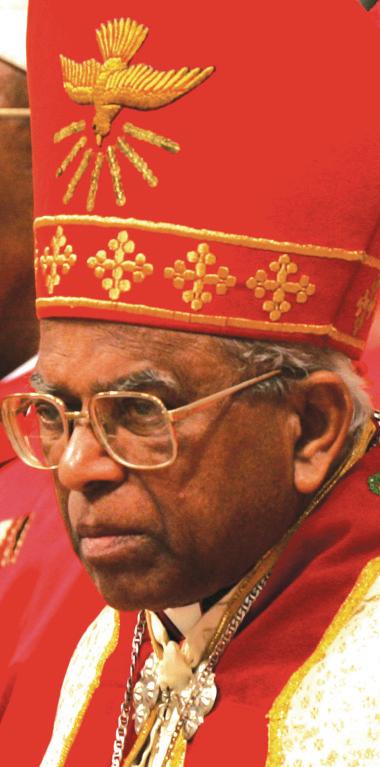
VATICAN CITY - The Vatican and many of the Latin-rite Bishops of India are not treating the SyroMalabar Catholic Church with justice, and that makes the Church look bad, Auxiliary Bishop Bosco Puthur of Ernakulam-Angamaly told Pope Benedict XVI.
While other Christians and other religions enjoy the freedom to build churches and conduct services anywhere in India, the Eastern Catholic churches “are denied it, paradoxically not by the State, but by our own ecclesiastical authorities,” the Bishop said.
Bishop Puthur, administrator of the Syro-Malabar Catholic Church, made his remarks to Pope Benedict on 7 April at the end of the Syro-Malabar Bishops’ ad limina visits to the Vatican to report on the status of their dioceses.
Generally, the leaders of the Eastern Catholic Churches such as the Syro-Malabar Church enjoy full freedom to elect Bishops and erect dioceses only in their Church’s traditional territory; otherwise, the responsibility is left to the Pope, often in consultation with the Latin-rite Bishops of the region concerned.
In the case of the Syro-Malabar Church, Bishop Puthur told Pope Benedict that its traditional territory was all of India until Latin-rite missionaries arrived in the 15th century.
Now any of its faithful living outside Kerala State are subject to the authority of the local Latin-rite Bishop.
“We are convinced that it is the credibility of the Apostolic See that is at stake if this jurisdictional right is not restored to its pristine status,” the Bishop said.
Bishop Puthur presented five requests to Pope Benedict: the restoration of “all-India jurisdiction” to the Syro-Malabar Church; permission to establish dioceses throughout India; permission to set up Archdioceses in Delhi and other large cities; the establishment of a special jurisdiction for the Persian Gulf states, in order
to serve the tens of thousands of Syro-Malabar Catholics from India working in the region; action to improve the pastoral care of Syro-Malabar Catholics in Europe, Australia and other parts of the world.
The Syro-Malabar leader thanked the Latin-rite Bishops of the United States and Canada for supporting the appointment in 2001 of a Chicago-based Bishop for his Church’s faithful in North America.
The Syro-Malabar Catholic Church has about 3.7 million members around the world, Bishop Puthur said. Currently, there are 29 dioceses served by 32,855 women Religious, 3,987 diocesan priests, 3,133 Religious Order priests and 745 Religious Brothers, he said.
In his talk to the Bishops, Pope Benedict urged them to work for unity within their dioceses, in their Church and with the all the Bishops of India.
“This responsibility is of special importance in a country like India
where the unity of the Church is reflected in the rich diversity of her rites and traditions,” he said.
Another area where efforts toward unity must be given priority is the family, the Pope said.
“A privileged expression of sharing in the divine life is through sacramental marriage and family life,” he said.
Pope Benedict said the Church can no longer assume that society at large will support or supplement its efforts to provide a “sound and integral education of young people in the ways of chastity and responsibility,” nor will it always reinforce a vision of marriage as a permanent bond between a man and a woman open to having and educating children.
“Have your families look to the Lord and His saving word for a complete and truly positive vision of life and marital relations, so necessary for the good of the whole human family,” he said. “Let your preaching and catechesis in this field be patient and constant.”
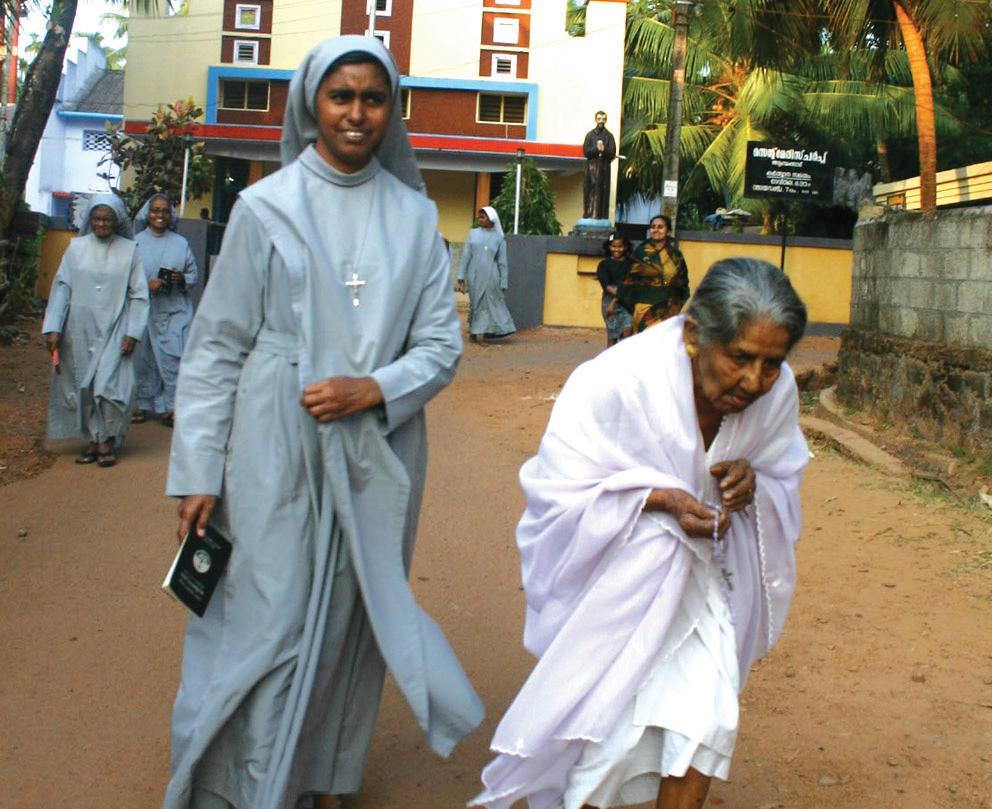
COCHIN, India - SyroMalabar Bishop Thomas Kurialassery, founder of the Sisters of the Adoration of the Blessed Sacrament, has been declared venerable by Pope Benedict XVI.
The Pope signed a decree on 2 April recognising the virtues of Bishop Kurialassery, who died in 1925, said Adoration Sister Benjamin Mary, vice postulator of the Bishop’s cause for sainthood.
“I’ve been working as vice postulator for the last seven years,” the nun, 70, told the Asian Church news agency UCA News.
“This news makes us happy and proud as he founded the Adoration congregation.”
Born on 14 January 1873, Bishop Kurialassery was ordained a priest on 27 May 1899 and consecrated Bishop on 3 December 1911.
He ministered in the southern Indian state of Kerala - an area which has many Christians in the predominantly Hindu country.
The prelate worked for spiritual renewal and his apostolic activities were inspired by devotion to the Eucharist.
He founded the Adoration congregation in 1908 and died in Rome on 2 June 1925.
His body was brought back to Changanacherry in
1935 and interred in St Mary’s Metropolitan Cathedral Church. Sr Benjamin Mary said the cause of beatification began in 1983.
“We are witnessing a regular flow of pilgrims where his mortal remains are kept,” she said.
“Hundreds of people visit the Cathedral church and offer prayers.”
Forty-three witnesses were examined and 100 documents were submitted illustrating his heroic virtues by the Congregation for Saints’ Causes, Sr Benjamin Mary said.
“Now with one convincing miracle, he will be elevated as blessed and we are all looking forward to that day,” Sr Benjamin Mary added.
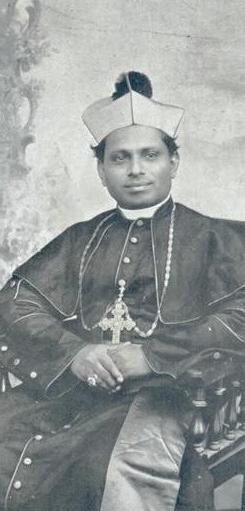
WASHINGTON - Because materialism, secularism and individualism are “rapidly enveloping our society and culture,” Washington Cardinal Donald Wuerl urged Catholics to actively participate in the Church’s new evangelisation efforts “to proclaim the Gospel anew.”
“This is a time when voices need to be heard that say there is an anchor, there is a basis, a moral foundation to the choices we make,” Cardinal Wuerl said in an address at The Catholic University of America.
The “subtle influences” of materialism, secularism and individualism, he added, “need to be cleared away before we can plant the seeds” of faith.
Cardinal Wuerl spoke on Why the New Evangelisation Now? to the DC Council of the Knights of Columbus on 28 March.
Quoting Pope Benedict XVI, Cardinal Wuerl said the new evangelisation is “an effort to re-propose the Gospel - what we do and how we express our faith” - to those who already know the faith but for whom it holds no interest.
Last June, the Pope announced that he was establishing a pontifical council to promote “a renewed evangelisation” to people “living through a progressive secularisation of society and a kind of eclipse of the sense of God.”
Two months later, Cardinal Wuerl took up Pope Benedict’s call and issued a pastoral letter, Disciples of the Lord: Sharing the Vision, in which he outlined his vision for a new evangelisation. In that pastoral, the Cardinal urged the faithful to “invite others to hear once again, maybe all over again for the first time, the exciting invitation of Jesus - ‘Come, follow me.’”
In his address to the Knights of Columbus, Cardinal Wuerl said “the new evangelisation is not a programme, and I have to say this over and over again. It is a mode of thinking, seeing and experiencing.” He called it “a lens through which we see the opportunities to proclaim the Gospel anew. Don’t think of it as some task - it is a recognition that the Holy Spirit is actively working in the Church.”
He said the religious values espoused by the Church can address “the challenges of today.”
The Cardinal said recent attempts in the State of Maryland to
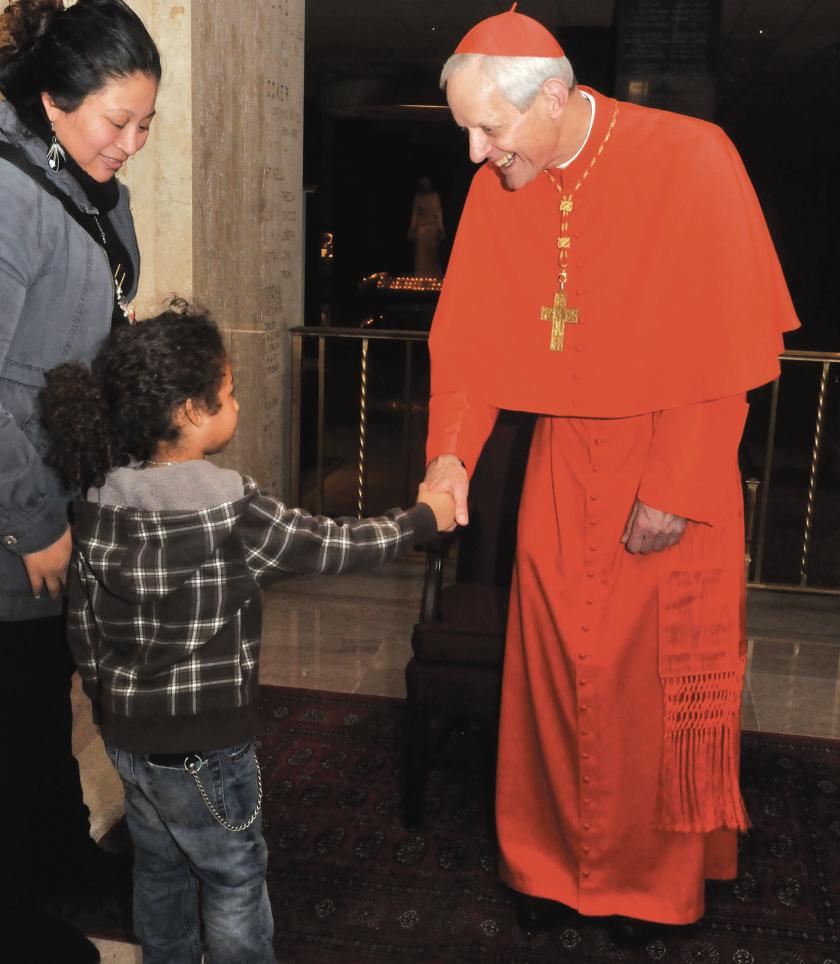
legalise same-sex marriage “seek to redefine, to change the basic meaning of marriage - we live in a society where a 51 per cent majority can determine reality.”
The Maryland House of Delegates earlier this month failed to reach a vote on a bill that would have permitted same-sex couples in the State to marry. Lawmakers sent it back to the House Judiciary Committee, effectively defeating the measure during this legislative year.
Cardinal Wuerl said that while same-sex couples and other unions can be called “domestic partnerships” or any other such label, “some words’ meanings, like ‘marriage,’ simply cannot be changed by a vote of the majority. You can’t change reality just by changing names and words.”
He also said the Church’s new evangelisation efforts can refute “the arrogant claims of secularists.”
“We are interrelated and we have obligations to one another,” Cardinal Wuerl said. “This is what the Church is talking about. This is what the Pope is talking about.”
He said the Sermon on the
Mount “offers a vision of life that truly inspires us.”
“Here (in the Sermon on the Mount presented in Matthew’s Gospel), we are challenged to envision a world where not only the hungry are fed, the thirsty are given drink, the stranger is welcomed and the naked are clothed, but also most amazingly sins are forgiven and eternal life is pledged,” Cardinal Wuerl said.
He said the new evangelisation is different than evangelisation that “brings the Word of God to those who do not yet know anything about Jesus Christ.” The new evangelisation, he said, “is bringing the Word back to those who have moved away from the Church, those who have been baptised, but not sufficiently evangelised.”
He said that to be successful in their new evangelisation efforts, Catholics must “know the faith well enough and be comfortable to share it. We have to know who Christ is.”
The “starting point” of this new evangelisation, Cardinal Wuerl said, “is recognising that God still speaks to His people, that God speaks to us today.”
Cardinal urges end to ‘priestly ministry’ crisis
VALENCIA, Spain (CNA/ Europa Press) - Cardinal Antonio Maria Rouco Varela of Madrid, Spain called priests to make frequent confessions in order to end “the crisis in priestly ministry.”
Speaking in Valencia on 4 April during a conference, he noted that both Pope Benedict XVI and his predecessor John Paul II made enormous efforts to end “the crisis in priestly ministry.”
To accomplish this, he explained, priests must “truly” believe in God and “understand the priesthood.”
They should “love Christ and God in a dynamic way,” because “in order to love one’s neighbour, he must first love God.”
Cardinal Rouco urged priests “to live in a state of grace,” emphasising that frequent confession is “essential.”
The “exercise of obedience,” which he described as “living the cross,” is also necessary even if it leads to “suffering.”
The Cardinal said the crisis “is beginning to subside” after it reached a crescendo between 1965 and 1985.
He noted that during this period, many abandoned the priesthood and Religious life.
Priestly celibacy was often ques-
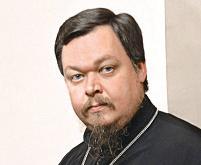
RUSSIA represents the best hope for Europe’s future, according to a prominent official of the Russian Orthodox Church.
“Russia has no future without conscience, morals and normal human relations and without faith,” Archpriest Vsevolod Chaplin told a Russian television audience. He said that Russia’s abiding religious faith is the reason why the country represents “the best future” for Europe.
Other European countries, and the US, have lost their moral bearings because they have embraced secularism, the Russian cleric said. “The West is now that same godless system which has collapsed as Communism, it has collapsed as Nazism, and it will collapse as capitalism.”
THE Vatican is organising a 2 May conference for Catholic bloggers, sponsored by the Pontifical Councils for Culture and for Social Communications.
The conference, held in Rome on the day after the beatification of Pope John Paul II, will include morning and afternoon sessions. In the morning, the speakers will be five active bloggers chosen to represent five language groups: Italian, English, Spanish, French and Polish (simultaneous translations will be provided). In the afternoon, Vatican officials will offer their reflections on blogging.
The Vatican officials participating in the day’s activities will include Cardinals Gianfranco Ravasi and Claudio Celli—the presidents, respectively, of the Pontifical Councils for Culture and for Social Communications—and Father Federico Lombardi, SJ, the director of the Vatican press office.
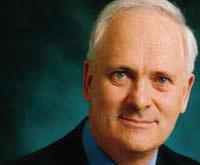
IRELAND’S former Prime Minister John Bruton has defended the role of religious education in the country’s schools, questioning the plan of current education minister Ruairi Quinn to cut down on religious instruction.
Bruton acknowledged that recent test scores had shown a troublesome decline in academic performance by Irish students, but dismissed the suggestion that religious instruction is to blame. The classroom time spent on religious education has not increased, he observed, since the years when Irish students performed better on standardised tests.
“So why single out the 30 minutes per day spent on religious formation, when there are so many other ways to find time to improve our scores in reading and mathematics?”
Bruton went on to say that schools should prepare students “not just for working life but for life as a whole.” Religious education plays a role in that process, he said.
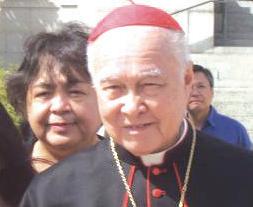
A 91 YEAR old Filipino Cardinal who has lived in Rome for the past 25 years is returning home to join in the battle against an aggressive family-planning bill.
Cardinal Jose Sanchez said that he was returning to the Philippines to join the country’s Bishops in their campaign to defeat the legislation which the nation’s hierarchy has roundly criticised. Although the bill’s sponsors failed to secure approval in the last parliamentary session, they have promised to redouble their efforts in coming weeks. The Bishops of the Philippines have condemned the legislation and warned that they would endorse a civil disobedience effort if it is enacted.
tioned and “alternative forms of living the priestly ministry” emerged in opposition to the traditional priestly role, the Spanish Cardinal said.
Some “tried to reconcile the work of the Church with other civil activities” at the public and private levels.
“Thus, secularisation advanced” while “the sense of the priesthood” began to slip away, he stated.
However, “a proposal of spiritual renewal in the lives of priests” emerged from the Second Vatican Council,” the Cardinal said. This renewal has been carried forward by John Paul II and his successor, Benedict XVI, the Spanish Cardinal added.
Cardinal Sanchez left the Philippines in 1985 when he was named secretary of the Congregation for Evangelisation. In 1991, he became prefect of the Congregation for Clergy. He retired from that post in 1996 at the age of 76, but elected to remain in Rome. He is one of three living Filipino Cardinals.
THE tomb of St Francis of Assisi, located under the altar of the basilica in that town, will reopen on 9 April after several weeks of renovations. The bronze coffin and the surrounding stone have been polished for the first time since the remains of St Francis were interred there in 1818. (St Francis had originally been buried in a simple stone sarcophagus; his body was moved into a more elaborate tomb almost six centuries later.) The renovations had begun in February and completed quickly by crews working day and night shifts. The tomb will be opened in time for a meeting of Franciscan leaders from around the world. Cardinal Angelo Bagnasco of Genoa, the president of the Italian Bishops’ conference, will preside at Mass in the Basilica.
VATICAN CITY - The feast day of Blessed John Paul II will be marked on 22 October each year in Rome and the dioceses of Poland.
When the Vatican made the announcement April 11, it also said Catholics throughout the world will have a year to celebrate a Mass in thanksgiving for his beatification.
While thanksgiving Masses for a beatification - like the observance of a feast day - usually are limited to places where the person lived or worked, “the exceptional character of the beatification of the Venerable John Paul II, recognised by the entire Catholic Church spread throughout the world,” led to a general permission for the thanksgiving Mass, said a decree from the Congregation for Divine Worship and the Sacraments.
The decree was published in the Vatican newspaper, L’Osservatore Romano, and included information about the thanksgiving Mass, Pope John Paul’s feast day, annual Masses in his honour and naming churches after him.
The newspaper also published the text of the opening prayer - formally the “collect” - for his feast day Mass in Latin, English, French, German, Spanish, Italian, Portuguese and Polish.
A local Bishop or the superior general of a Religious Order is free to choose the day or dates as well as the place or places for the thanksgiving Mass, as long as the

Pope John Paul II is seen in a promotional image for the Polish-produced documentary, J ohn Paul II: I Kept Looking For You . Pope Benedict XVI, who watched the film on 9 April at the Vatican, said “John Paul II was a great contemplative and a great apostle .”
Masses are celebrated by 1 May 2012, which is one year after the beatification, the decree said.
In the Diocese of Rome, where Pope John Paul served as Bishop, and in all the dioceses of his native Poland, his feast day is to be inserted automatically into the annual calendar, the decree said.
The date of 22 October was chosen as the day to remember him because it is the anniversary of the liturgical inauguration of his papacy in 1978.
Outside Rome and Poland, Bishops will have to file a formal request with the Vatican to receive permission to mark the feast day, the decree said.
The local-only celebration of a Blessed’s feast is one of the most noticeable differences between being beatified and being canon-
ised, which makes universal public liturgical veneration possible. The only places where parishes and churches can be named after Blessed John Paul without special Vatican permission are in the Diocese of Rome and the dioceses of Poland or other places that have obtained specific Vatican permission to insert Pope John Paul’s 22 October feast in their liturgical calendar, the decree said.
In a private ceremony in St Peter’s Basilica on 8 April, the remains of Pope Innocent XI were moved from the altar in the Chapel of St Sebastian to the basilica’s Altar of the Transfiguration to make way for the soon-to-be beatified Pope John Paul, who is presently buried in the crypt below the Basilica’s high altar. His body will be transferred following his beatification on 1 May.
Cured repairman completes 1,000 mile hike after being paralysed
BY CATHOLIC NEWS SERVICEANGERS, France - The cure of a French TV repairman who completed a 1,000 mile hike after his paralysed leg was inexplicably healed has become the 68th miracle to be officially recognised by the Catholic Church at the French Marian sanctuary of Lourdes.
“After profound expert examinations, the International Medical Committee of Lourdes has concluded this was a remarkable occurrence, an unexplained cure according to the current state of science,” said Bishop Emmanuel Delmas of Angers.
“This cure can be considered a personal gift from God for this man, an instance of grace and a sign from Christ the saviour,” he added.
Serge Francois, now 65, had been twice operated on unsuccessfully for a herniated disc when he travelled to Lourdes on a diocesan pilgrimage on 12 April 2002.
He said the “unbearable flashing pain” in his left leg was replaced after a few minutes of prayer by an “intense sensation of goodwill and warmth,” which continued until the paralysed limb completely recov-

ered. The repairman, now retired, reported the incident a year later to the Lourdes medical bureau, and it was judged “remarkable” by the 20 member International Medical Committee on 1 December 2008. His case was studied by a Church canonical commission in September 2010. Francois completed the Way of St James pilgrimage through France and Spain to the shrine of Santiago de Compostela after the recovery of his leg.
In a 27 March statement, Bishop Delmas said the committee had concluded the cure was “sudden, complete at functional level, unrelated to any particular therapy and lasting until today, eight years later.”
“It is certain that Mr Serge Francois was totally and perma-
VATICAN CITY - Pope John Paul II’s life and ministry were built on prayer and on witnessing to the Gospel, Pope Benedict XVI said after watching a Polish-produced documentary about his predecessor.
“Once again, I want to underline the two foundations of his life and ministry: prayer and missionary zeal,” the Pope said on 9 April after a Vatican screening of the documentary, John Paul II: I Kept Looking for You
Pope Benedict watched the film in the early evening with the director and producers, several Cardinals and Vatican officials.
After the screening, he said:
“John Paul II was a great contemplative and a great apostle. God chose him for the See of Peter and protected him so he could lead the Church into the third millennium. With his example, he guided us all in this pilgrimage and still continues to accompany us from heaven.”
The film was directed by Jaroslaw Szmidt and has been playing in Polish theatres since 11 March. Tadeusz Lampka, one
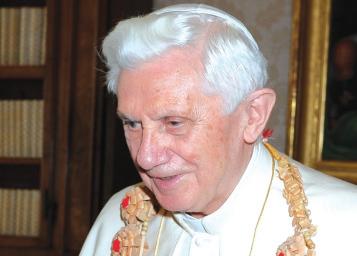
Pope Benedict XVI
of the producers, told reporters at the Vatican that 300,000 people had seen the film in Poland in its first month on the big screen.
The producers plan on having DVDs of the film in several languages ready for sale by 1 May when Pope Benedict beatifies his predecessor.
The film concentrates on Pope John Paul’s pontificate and includes some 50 interviews.
Among the spiritual leaders interviewed are the Dalai Lama; Ecumenical Patriarch Bartholomew of Constantinople; and Rabbi Israel Meir Lau, a former chief rabbi of Israel.
Pope John Paul’s closest aides appear in the documentary, as do journalists, an Italian actor, Polish and Italian politicians and Prince El Hassan bin Talal of Jordan.
nently cured at Lourdes,” he said.
In a 4 April interview with Catholic News Service, the Angers diocesan chancellor, Mgr Joseph Traineau, said Bishop Delmas’ declaration should be treated as official recognition of the miracle by the Catholic Church.
“The word ‘miracle’ isn’t used at Lourdes now, because of its connotations - we now talk about ‘miraculous’ or ‘remarkable’ cures, but the meaning is the same,” said the chancellor, who co-signed the declaration.
“The diocesan Bishop has publicly recognised that this was an absolutely unexplained cure, so this process is now complete. Although a cure can only be absolutely definitive once the person in question has died, this is indeed the 68th miraculous cure to be accepted by the Church.”
Lourdes, close to the Pyrenees in southern France, attracts about six million visitors annually and has been a place of pilgrimage since 1858 when St Bernadette Soubirous experienced the first of 18 visions of the Virgin Mary while gathering firewood in February 1858.
To be declared miraculous, cures must be “found complete and lasting,” involving a “serious illness which is incurable,” and must involve a sudden “indisputable change from a precise medical diagnosis of a known illness to a situation of restored health.”
VATICAN CITY (CNA/ EWTN News) - Twenty two martyrs of the Spanish Civil War and a priest beheaded during the French Revolution will be declared “Blessed” by the Church in coming months.
On 2 April, the Pope met with Cardinal Angelo Amato, the prefect of the Vatican’s Congregation for the Causes of Saints, to review canonisation causes up for advancement.
The Vatican announced on 2 April that Pope Benedict XVI had approved 29 beatification decrees and recognised the “heroic virtue” of six candidates for sainthood.
The causes of Fr Francisco Esteban Lacal of the Missionary Oblates of Mary Immaculate and 21 of his companions – among them Oblate students, Religious and priests – were approved for martyrdom.
They were killed in 1936 along with a layman, Candido Castan San Jose, after a series of persecutions against them for their work in Religious communities and parishes.
It is estimated that nearly 7,000 clergy and Religious, including 12 Bishops, were killed for their faith during the 1936-1939 Spanish Civil War.
The Vatican also determined that Fr Peter Adrian Toulorge of the Premonstratensian Regular Canons died as a martyr during the French Revolution.
He was guillotined in Coutances, France in 1793 for being a Catholic priest.
His cause was opened in 1922, along with those of 56 other priests from France’s Normandy region.
In addition to the newly declared martyrs, the Vatican approved miracles attributed to the intercession of two priests and three Religious Sisters from Italy and Spain, thus paving the way for their beatifications.
Among them is Fr Clemente Vismara, an Italian priest of the Pontifical Institute for Foreign Missions who died in 1988 at 91 years old. The miracle involved a 10 year old boy in Myanmar, where Fr Vismara worked.
The boy hit his head on a rock after he fell from a tree branch 15 feet above the ground. He went into a coma but after three days of prayer for Fr Vismara’s intercession, the boy woke up and suffered no permanent damage.
Although no canonisation causes were approved to fully recognise sainthood, six Catholic faithful were recognised for having shown “heroic virtue” in their lives.
Bishop Thomas Kurialacherry, the first Bishop of Changanacherry, India, Canadian Religious Br Theophanius-Leo Chatillon of the Brothers of Christian Schools and 14 year old Bernhard Lehner, a courageously faithful German teenager who died from an illness in 1944, were among them.
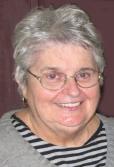 By Barbara Harris
By Barbara Harris
Words, words, words on a page ...
For many people, these words that you are now reading are merely squiggles on a page. The reason for the squiggles can be many and varied. Some of those reasons include the fact that a person does not understand the English language at all, or it could be because of some learning barriers, or maybe they can’t even see the words.
Perhaps the words are in a colour that doesn’t come within their range of seeing. Some people with Alzheimer can recognise words until their mind moves to another word and the first word escapes.
For thousands of Australians, this is a reality. Have we as a Church even begun to think about this or are we stuck in a mould of words, words and more words. And the more complex the better.
Think about the last time you
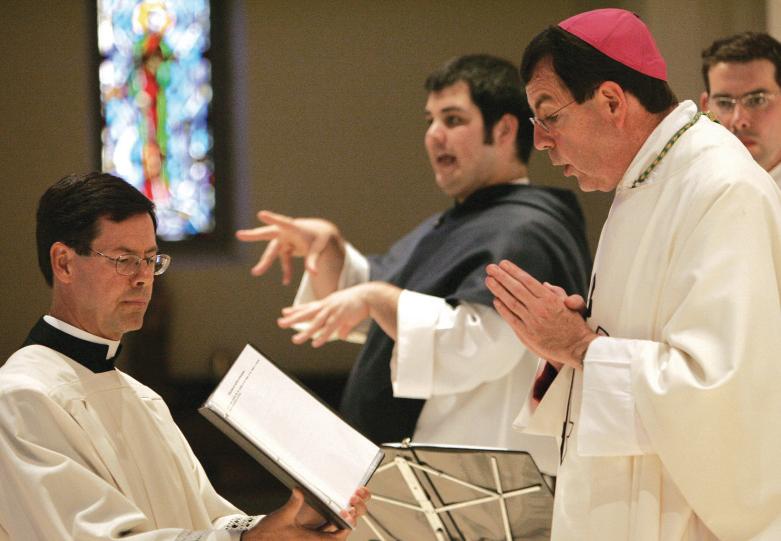
went to Mass. How easy was it for
All the people to hear, understand, or see God’s loving act? What emphasis was there on words? How were the needs for people who do not read or understand words met?
We perhaps are so used to doing things in a certain way that we do not question what we think is “normal”.
As I reflect on my life, there was a period in which the learning of the meaning of words was very important to me. I made it a habit to learn a new word every day. The more letters or syllables in the word, the
better. I now know that I did it to impress people with my knowledge of lots of words (wide vocabulary) and to feel superior to others. It gave me a sense of power and control and I was definitely arrogant.
My involvement with people who use Auslan was/is a conversion point. In the Auslan dictionary, there about 4,100 words.
Auslan is not a written language. Compare this with 500,000 words in the Oxford Dictionary. Do words make us better Christians? Better members of the Catholic Church?
When I reflect on how Jesus
used language I see that Jesus used everyday words that His listeners would easily understand.
Jesus did not set out to impress or to make a concept more unintelligible but rather to make ideas easily understood.
Jesus’ words were used to inform and challenge people with truth.
Jesus’ stories were shared by one person telling another. Jesus took a mustard seed in his fingers and showed just how small it was and everyone knew that it could grow into a very large bush like a tree.
The story helps us to know that we are small like a mustard seed.
Many writers tell me that this story is a “theological narrative.” One writer wrote “Narrative possesses a unique status as a genre particularly suited for expressing Christian faith.”
Why do we need to confuse Jesus’s simple stories? Does using complex language help us to get closer to Jesus?
Keeping Jesus in mind in our everyday talk can be a first step to inclusion. Why do I have to ‘facilitate’ something? Why can’t I just ‘help?’ Why do I need to say, ‘A majority of’ when it is ‘most’? Why do I need to say ‘an adequate number of’ when it is ‘enough’? Why do I need to say ‘At the present time’ when it is ‘now’? Why don’t we write in ‘Plain English’? Plain English is not baby talk. Plain English makes sense. In plain English, sentences are shorter. Clearer. In plain English, I become
less important, my knowledge becomes less important and the person I am sharing with is more important. Plain English is only one of the steps I can take to include.
It is a known fact that in order for people to change their attitudes, there must be some sort of an experience. As we come closer to Holy Week and Easter, you might like to experience the following exercises.
1) Turn the sound off the TV while you watch your favourite show and do this for two consecutive episodes. How much did you miss?
2) Turn the picture off the TV while you listen to your favourite show and do this for two consecutive episodes. How did this affect your understanding?
3) View an internet website in a foreign language and attempt to understand its contents.
4) Share some exciting news or experience with someone without using words.
5) Imagine you have a problem with words for whatever reason –and look at the Holy Week Services in your parish. How meaningful are they? Is there a place for drama, graphics or concrete examples?
These exercises can help us learn something new.
As you go about your day filled with words, perhaps you can help others by speaking plainly, clearly, simply.
May our lives all be changed for the better because our love for one another is practical.
My vocation
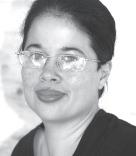 with Debbie Warrier
with Debbie Warrier
Idecided to become a priest one Spring afternoon in 1953.
I had visited a student priest at a seminary. Coming home on the bus, I was overcome with a joyous feeling that this is what I have always wanted to do with my life. When I finally told my family, they were delighted.
Previously, I had been a lazy student, more interested in sport than study. Having discerned my vocation, I applied myself well enough to matriculate (Form VI). I also had a reputation for not taking life very seriously.
At the Sunday night dance before I went to the seminary, a friend said, “I will see you here next week. They will throw you out for fooling about.” They didn’t but it was ‘touch and go’ a few times.
My first parish appointment was in the hills close to Melbourne. I lived in a bungalow at the back of the Presbytery. I was so happy there that I thought I could live in that little room for the rest of my life.
The truth was that I was scared. The thought of preaching before crowds of people was daunting. The fear that I might find celibacy too hard made me feel safe in my little cell ‘far from the madding crowd’.
I was then sent to a busy northern suburb of Melbourne.

I loved the work there but I also made many mistakes in my first years of priesthood, losing things and arriving late on many occasions.
Some parishioners complained and my parish priest told them to leave me alone and that I would be ok which was great for my confidence. My second parish appointment coincided with the mid-60s when the world changed forever. I saw people walk away from our Church. Some of my friends left priesthood.
I was feeling so confused and lonely that I spoke to the psychiatrist who was the director of a Psychiatric Centre where I went to work. “Everyone has a breaking point” he told me, “but you are not clinically depressed. These
are tough times to be a Catholic priest.”
I had been very careful to protect my promise of celibacy but I knew now that I had to do so in a more positive, engaging way.
I have had many friendships with women; some of them became lifelong friends.
I was careful enough only to befriend those people whom I believed to be secure in their own lives and respectful of my commitment to celibacy and priesthood. I do not believe that I would have survived as a priest without these friendships.
From seminary days I have always had friends who were priests. We are kind and straight with each other.
For about 20 years my Bishop
took me out of parish life for special ministry. The first half of that time I worked around institutions and courts for people in trouble with the law. I found that many of these people were more sinned against than sinning. For the second half of that time, I was sent to work in our major regional seminary. I believe they are the best group of young people that I have ever met.
Now I am back in parish ministry where I have been for over 20 years. Even though some of our priests have hurt children, caused great sorrow and brought anger to many people, Catholic lay people have been loyal to their Church. I am now dependent on the ‘many ministries’ that people exercise in the Church. Pastoral associates, school principals, parish workers generally are the hope of the parish churches. Catholic people still love their priests.
Looking back and forward, I can say that we are not Church triumphant anymore.
But this crisis is an opportunity for us. Two Church documents came out of the Second Vatican Council and I am not sure that we applied them as well as the Church Fathers intended.
From the first document about the nature of Christ’s Church I read that the Church of Christ ‘subsists’ in the Catholic Church. This meant to me that the Catholic Church is a Church founded in grace and truth, but it has no exclusive hold on God. It does not exclude the work of other churches, or faiths or any people of goodwill. The Holy Spirit breathes where It will.
A second document is about Church in the world. We are now a Church in the electronic age, where communication is instant
and far reaching. I believe that within 10 years we will need another Ecumenical Council to present a Catholic view of our place in this world; our fragile earth, people in the world on the move (refugees and migrants), person to person relationships, including intimate sexual relationships. A Christian vision of the human person’s place in an electronic age is a big challenge to our Church and our world.
I am 75 years old and for the last five years I have had an incurable cancer. On retreat last year, I had a persistent thought which was ‘Do you really believe in life after death?’ I took this as an invitation to prayer, so no argument or analysis. Just sit with the question prayerfully. The thought came to me that my Church baptised me, absolves me, feeds me with words to live by, and gives me a sacrament for the journey.
I have experienced great love and support during my illness.
My Church has never let me down in life. It will carry me to death and beyond. This thought in prayer has left me feeling both relieved and free, even though until then I had not realised that the thought of life after death was a burden or anxiety for me.
I have needed my faith and prayer just to keep me grounded. I have never taken my life or faith for granted. My prayer has always been for the grace of perseverance. As the song writes, ‘you may get what you pray for’.
I remember that day in Spring now in the Autumn of my life. It has been a great grace for me to have lived my life as a Catholic priest. And for what lies ahead, I will trust in the Providence of God. I have taken the road less travelled, but for me there is no other way to go.
FRIDAY, 15 APRIL
Payment due date for World Youth Day
If you are 18-35 years of age and interested in attending this year’s August WYD in Spain, don’t miss out and register now. Enq: Anita 9422 7912 or www.wydtours. com/perth.
TUESDAY, 19 APRIL
The Passion of Our Lord Jesus Christ
7-8pm at St Benedict’s school hall, Alness St, Applecross. “United with him in His suffering on the Cross, may we share His Resurrection and new life” by Norma Woodcock. There will be a collection to cover costs. Enq: 94871772 or ww.normawoodcock.com.
THURSDAY, 21 APRIL TO TUESDAY, 26 APRIL
Holy Week Triduum in the Traditional Latin Rite Saint Anne’s Parish, 11 Hehir St, Belmont. Enq: Fr Michael 9444 9604.
THURSDAY, 21 APRIL
7pm Latin Mass followed by Adoration
GOOD FRIDAY, 22 APRIL
1.30pm Stations of the Cross
3pm Solemn Liturgy of Passion and death of our Lord (fast and abstinence)
7.30pm Ancient Ceremonies of Tenebrae
HOLY SATURDAY VIGIL, 23 APRIL
7.30pm Vigil of the reading of the 12 Prophecies of Easter
10pm Vigil Ceremonies and First Latin Mass of Easter
EASTER SUNDAY, 24 APRIL
7.30am, 9.30am and 11.30am Holy Mass
EASTER MONDAY, 25 April
10am Holy Mass
EASTER TUESDAY, 26 APRIL
10am Holy Mass with Easter followed by lunch at Miss Maud’s restaurant.
GOOD FRIDAY, 22 APRIL
Passion Play
9.45am at Holy Spirit Oval, 2 Keaney Rd, City Beach. Dramatised Stations of the Cross. 35 Actors. Enq: Janny 0420 635 919.
Divine Mercy Novena
3pm at Lot 375, Alcock St, Maddington, Holy Family Parish. Every day until 30 April. Adoration, Divine Mercy formation and healing prayers. 2.30pm Reconciliation.
Enq: Fr Parackal 9493 1703.
Good Friday Ceremonies
11am at Catholic Agricultural College, Bindoon. Begins with Stations of the Cross. 2.30pm will be a solemn ceremony - The Lord’s Passion. 10.30am Reconciliation. Enq: Fr Paul 9571 1839.
HOLY SATURDAY, 23 APRIL
Passion Play – 35 Actors
11.30am Fremantle High St Mall.
Enq: Janny 0420 635 919.
THURSDAY, 29 APRIL
DRUMBEAT Seminar
7pm at Infant Jesus Parish Centre, 47 Wellington St, Morley. ‘Discovering Relationships Using Music, Beliefs, Emotions, Attitudes and Thoughts’ by Morley Mental Health Support and Wellness Group. Opportunity for you to have fun and learn about yourself and others. No cost. Bring a plastic or tin rubbish bin, of any size. Enq: Con 9276 7638 or Barbara 9328 8113.
SATURDAY, 30 APRIL
Live Ministries - Charismatic Healing
6.30pm at Sacred Heart Parish, 64 Mary St, Highgate. Come and get prayed over and be healed from past and present issues or stand in for a loved one who may be ill or facing problems at this time. Team includes Fr H Thomas, Fr D Watt, Fr P Bianchini, Fr D Harris. All welcome. Enq: Fr Hugh or Gilbert 0431 570 322.
SUNDAY, 1 MAY
Centenary of Kellerberrin Parish
11am at St Joseph’s Parish, Kellerberrin. All present and past parishioners are invited to the parish Centenary celebrations. Mass celebrated by His Grace, Archbishop Barry Hickey, followed by a catered luncheon at the Kellerberrin shire hall. RSVP by Saturday, 2 April for catering purposes to Christine Laird 9045 4235 or fax 9045 4602, or Audrey Tiller 9045 4021, or stmary@westnet.com.au.
2011 Busselton Rosary Celebration
12.30pm at Queen of the Holy Rosary Shrine, ‘Bove’s Farm’, Roy Rd, Jindong, Busselton. Celebrant: Bishop
Gerard Holohan. Mass followed by Rosary procession and Benediction. Tea provided. All welcome. Bus booking and Enq: Francis 0404 893 877 or 9459 3873.
Divine Mercy Feast
3pm at Lot 375, Alcock St, Maddington, Holy Family Parish. Solemn procession of Divine Mercy Icon, Adoration, Mass and fellowship dinner. All welcome.
Enq: Fr Parackal 9493 1703.
Divine Mercy Sunday
1.30pm at St Mary’s Cathedral, 17 Victoria Sq, Perth. Rosary, Reconciliation, chaplet of Divine Mercy and prayers to end abortion. Benediction and Veneration of two first-class relics of St Faustina. 2.30pm Concelebrated Mass. Main Celebrant and Homily: Mgr Kevin Long, Rector of St Charles’ Seminary. Parking for clergy at ground level. Enq: John 9457 7771.
St Joseph’s Convent reunion
11am at St Joseph’s Parish, 79 James St, Kellerberrin. All ex-students of the Convent and Preventorium are invited to a ‘get together for the Parish Centenary celebrations. Begins with Holy Mass followed by luncheon at the Town Hall. Any memorabilia of school days is keenly sought. Enq: Audrey 9045 4021or Christine 9045 4235.
Special Devotion of Divine Mercy Chaplet
3pm at St Thomas More Parish, Dean Rd, Bateman. Regular devotions will continue on the second Sunday of each month, with the next devotion on 11 May 2011. Enq: George Lopez 9310 9493 or 9325 2010(w).
TUESDAY, 3 MAY
“An Oasis in the Desert” Seminar
7pm at Emmanuel Centre, 25 Windsor St, Perth. ‘Challenges in the Desert and discovering your oasis’ by Emmanuel Centre Mental Health Support and Wellness Group. Dealing with challenges and strategies. Come and listen, share and learn. No Cost. Followed by tea and biscuits. Enq: Barbara 9328 8113.
SATURDAY, 7 MAY
Day with Mary
9am-5pm at St Peter the Apostle Parish, 91 Wood St, Inglewood. Day of prayer and formation based on the Fatima message. 9am Video; 10.10am Holy Mass; Reconciliation, Procession of the Blessed Sacrament, Eucharistic Adoration, Sermons on Eucharist and Our Lady, Rosaries and Stations of the Cross. BYO lunch. Enq: Franciscan Sisters of the Immaculate 9250 8286.
MONDAY, 9 MAY
Pilgrimage for 17 days
Vietnam and Cambodia tour until 25 May. Includes the Centre for Handicapped Children, the opening of a new church on 12 May. $3,800 per person twin share. Enq: Francis 9459 3873 or 0404 893 877.
SATURDAY, 14 MAY TO SUNDAY, 15 MAY
Catholic Faith Renewal Weekend Retreat
9am- 6pm (daily) at James Nestor Hall, Catholic Education Centre, 50 Ruislip St, West Leederville. “ Living life to the fullest in Christ” by Fr Henriques. Admittance by registration only. Enq: Kathy 92950 913, Ann 0412 166 164 or Rita 9272 1765, catholicfaithrenewal@gmail.com.
WEDNESDAY, 25 MAY
‘An hour for Sheen’ Variety Concert
7.30pm at Gibney Hall, Trinity College, East Perth. Featuring St Joseph’s Chamber Choir; Yan Kee soprano; Daniel Mullaney baritone; June Glen poet and raconteur; John Meyer pianist. Part of the proceeds to two overseas missions and the supporting of the Cause of Servant of God Archbishop Fulton J Sheen. $27.50 inc supper. Pensioner and Senior discount. Credit card payment facilities available. Ample parking. Enq and tickets: Daniel 9291 8224, sheensociety@globaldial.com.
EVERY SUNDAY
Gate of Heaven Catholic Radio
Join the Franciscans of the Immaculate every Sunday from 7.30-9pm on Radio Fremantle 107.9FM for Catholic radio broadcast of EWTN and our own live shows. Enq: radio@ausmaria.com.
Pilgrim Mass - Shrine of the Virgin of the Revelation
2pm at Shrine, 36 Chittering Rd, Bullsbrook. Commencing with Rosary followed by Benediction. Reconciliation is available before every celebration. Anointing of the Sick administered during Mass every second Sunday of the month. Pilgrimage in honour of the Virgin of the
Revelation, last Sunday of the month. Side entrance to the church and shrine open daily between 9am-5pm. Enq Sacri 9447 3292.
EVERY FIRST SUNDAY
Divine Mercy Chaplet and Healing Prayer
3pm at Santa Clara Church, 72 Palmerston St, Bentley. Includes Adoration and individual prayer for healing. Spiritual leader: Fr Francisco. All welcome. Enq: Fr Francisco 9458 2944.
EVERY SECOND SUNDAY
Healing Hour for the Sick
6pm at St Lawrence Parish, 392 Albert St, Balcatta. Begins with Mass, Exposition of the Blessed Sacrament and prayers. Enq: Fr Irek 9344 7066 or ww.stlawrence. org.au.
EVERY THIRD SUNDAY OF THE MONTH
Oblates of St Benedict
2pm at St Joseph’s Convent, York St, South Perth. Oblates are affiliated with the Benedictine Abbey of New Norcia. All welcome to study the rule of St Benedict and its relevance to the everyday life of today for lay people. Vespers and tea later. Enq: Secretary 9457 5758.
EVERY FOURTH SUNDAY OF THE MONTH
Holy Hour for Vocations to the Priesthood, Religious Life
2-3pm at Infant Jesus Parish, Wellington St, Morley. The hour includes Exposition of the Blessed Eucharist, silent prayer, Scripture and prayers of intercession. Come and pray that those discerning vocations to the priesthood or Religious life hear clearly God’s loving call to them.
EVERY MONDAY
Evening Adoration and Mass
7pm at St Thomas Parish, Claremont, Cnr Melville St and College Rd. Begins with Adoration, Reconciliation, Evening Prayer and Benediction. Followed by Mass and Night Prayer at 8pm. Enq: Kim 9384 0598, claremont@ perthcatholic.org.au.
LAST MONDAY OF EVERY MONTH
Christian Spirituality Presentation
7.30-9.15pm at the church hall behind St Swithan’s Anglican Church, 195 Lesmurdie Rd, Lesmurdie. Stephanie Woods presents The Desert Period of Christianity, 260 to 600AD. From this time period came the understanding of the monastic lifestyle and contemplative prayer. No cost. Enq Lynne 9293 3848.
EVERY TUESDAY
Novena and Benediction to Our Lady of the Miraculous Medal
6pm at the Pater Noster Church, Marmion and Evershed Sts, Myaree. Mass at 5.30pm. Enq: John 0408 952 194.
Spirituality and The Sunday Gospels
7-8pm at St Benedict’s school hall, Alness St, Applecross. The power of the Gospel message; How can we live meaningful and hope-filled lives? Presented by Norma Woodcock. Donation for The Centre for Catholic Spiritual Development & Prayer. Enq: 9487 1772 or www.normawoodcock.com.
Bible Teaching with a difference
7.30pm at St Joachim’s Parish Hall, Shepparton Rd, Victoria Park. Exciting revelations with meaningful applications that will change your life. Novena to God the Father, followed by refreshments. Bring Bible, a notebook and a friend. Enq: Jan 9284 1662.
EVERY WEDNESDAY
Holy Spirit of Freedom Community
7.30pm at The Church of Christ, 111 Stirling St, Perth. We are delighted to welcome everyone to attend our Holy Spirit of Freedom Praise Meeting. Enq: 0423 907 869 or hsofperth@gmail.com.
Holy Hour at Catholic Youth Ministry
6pm at 40A Mary St, Highgate, Catholic Pastoral Centre. 5.30pm Mass followed by $5 fellowship supper. Enq: Stefania 9422 7912 or www.cym.com.au.
EVERY FIRST WEDNESDAY
Holy Hour prayer for Priests
7-8pm at Holy Spirit Parish, 2 Keaney Pl, City Beach. All welcome. Enq: Linda 9341 3079.
SECOND WEDNESDAY OF THE MONTH
Chaplets of the Divine Mercy
7.30pm at St Thomas More Church, Dean Rd, Bateman. Chaplet will be accompanied by Exposition followed by Benediction. Monthly event. All welcome. Enq: George 9310 9493 or 9325 2010 (w).
EVERY THURSDAY
Divine Mercy
11am at Sts John and Paul Church, Pinetree Gully Rd, Willetton. Pray the Rosary and Chaplet of Divine Mercy, and for the consecrated life especially here in John Paul Parish, conclude with veneration of the First Class Relic of St Faustina. Please do come and join us in prayer. Enq: John 9457 7771.
Fr Corapi’s Catechism of the Catholic Church
7.30pm at St Joseph Church, 20 Hamilton St, Bassendean - Parish Library. Enq: Catherine 9329 2691.
FIRST THURSDAY OF THE MONTH
Taize Prayer and Meditation
7.30-8.30pm at Our Lady of Grace Church, 3 Kitchener St, North Beach. Prayer and meditation using songs from the Taize phenomenon. In peace and candlelight we make our pilgrimage. All are invited. Enq: Joan 9448 4457 or Office 9448 4888.
FIRST FRIDAY OF THE MONTH
Holy Hour for Vocations to the Priesthood and Religious Life
7pm at Little Sisters of the Poor Chapel, 2 Rawlins St, Glendalough. Mass, followed by Adoration with Fr Doug Harris. All welcome. Refreshments provided.
Catholic Faith Renewal Evening
7.30pm at Sts John and Paul’s Parish, Pinetree Gully Rd, Willetton. Songs of Praise, sharing by a priest followed by Thanksgiving Mass and light refreshments after Mass. All welcome to attend and bring your family and friends. Enq: Kathy 9295 0913, Ann: 0412 166 164 or catholicfaithrenewal@gmail.com.
Communion of Reparation All Night Vigils
7pm-1.30am at Corpus Christi Church, Lochee St, Mosman Park. Enq: Vicky 0400 282 357 and at St Gerard Majella Church, Ravenswood Dr and Majella Rd, Mirrabooka, Enq: Fr Giosue 9349 2315, John or Joy 9344 2609. The Vigils consist of two Masses, Adoration, Benediction, Prayers and Confession in reparation for the outrages committed against the United Hearts of Jesus and Mary. All welcome.
Healing Mass
7pm at St Peter’s Parish, Wood St, Inglewood. Reconciliation, praise and worship, Exposition of Blessed Sacrament, Benediction, Anointing of the Sick, and special blessing. Celebrants Fr Sam and other clergy. All welcome. Enq: Priscilla 0433 457 352, Catherine 0433 923 083 or Mary-Ann 0409 672 304.
Healing and Anointing Mass
8.45am at Pater Noster, Myaree. Reconciliation, followed by Mass including Anointing of the Sick, Praise and Worship to St Peregrine and the Sacred Heart of Jesus. All welcome. Enq: Joy 9337 7189.
EVERY FIRST SATURDAY
Healing Mass
12.35pm at St Thomas, Claremont Parish, cnr Melville St and College Rd. Spiritual leader: Fr Waddell. Enq: Kim 9384 0598, claremont@perthcatholic.org.au.
FRIDAY, 8 TO WEDNESDAY, 21 SEPTEMBER
Cruise on the River Nile
14-Day package. Includes Tour/Sightseeing of Jordan and Egypt. Cost: $4,900 per person twin share (22 people). Accompanying priest: Fr Joe Carroll. Itinerary and Enq: Fadua 9459 3873 or 0404 893 877.
FRIDAY, 11 NOVEMBER TO TUESDAY, 22 NOVEMBER
Pilgrim Tour To The Holy Land Jordan, Israel and Egypt. Spiritual Director, Fr Sebastian Kalapurackal VC from St Aloysius Church Shenton Park. Enq: Francis – Coordinator, 9459 3873 or 0404 893 877 or Skype ID: perthfamily.
PILGRIMAGE TO PRAGUE, POLAND AND AUSTRIA
St Jude’s parish, Langford is organising a 13-day pilgrimage departing 1 October. Pilgrimage will include visits to the Shrines of Divine Mercy, Infant Jesus, the Black Madonna, St Faustina, the birthplace of Pope John Paul II and the Museum at Auschwitz. Total cost per person $5,800. The Spiritual Director, Fr Terry Raj. Enq: Co-ordinator John Murphy 9457 7771, Matt 6460 6877 mattpicc1@gmail.com.

ACROSS
1 An Old Testament prophet
6 ___ Fideles
10 Type of vow
11 Took communion
12 ___ of sin
16 ___ docendi
18 Prayer time
20 Nazareth, to Jesus
21 Adam donation, and more
22 Catholic columnist Bombeck
2 “It is not good for man to be ___” (Gn 2:18)
3 Script conclusion?
4 Second pope
5 Pope St Pius Xʼs surname
7 Joseph interpreted these
8 Number of biblical sorrows of Mary
9 “…world without ___. Amen” 13
LAST WEEK’S SOLUTION
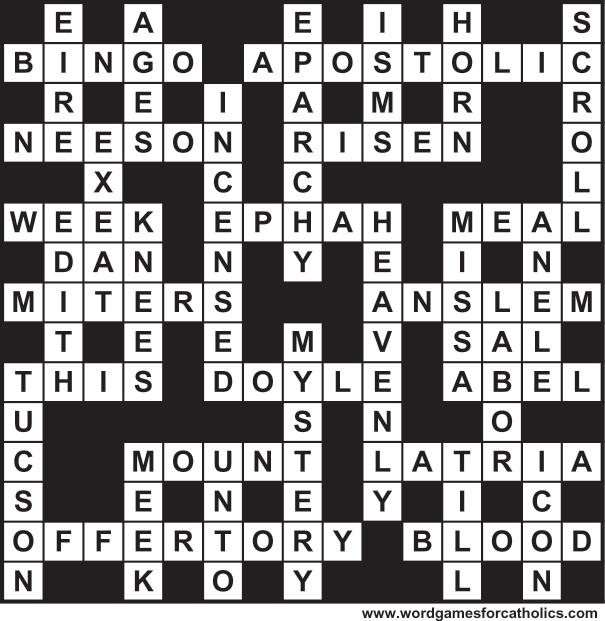
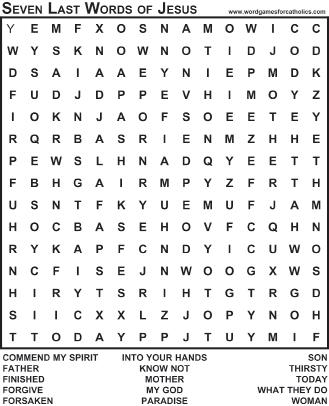
WRR LAWN MOWING & WEED SPRAYING Garden clean ups and rubbish removal. Get rid of bindii, jojo and other unsightly weeds. Based in Tuart Hill. Enq 9443 9243 or 0402 326 637.
BUSINESS OPPORTUNITY
Work from Home - P/T or F/T, 02 8230 0290 or visit www.dreamlife1.com.
ARE YOU BUYING OR SELLING real estate or a business? Why not ask Excel Settlements for a quote for your settlement. We offer reasonable fees, excellent service and no hidden costs. Ring Excel on 9481 4499 for a quote. Check our web site on www.excelsettlements.com.au.
NEW BOOK BINDING, General Book Repairs; Rebinding; New Ribbons; Old Leather Bindings Restored.
Tydewi Bindery 0422 968 572.
HOLIDAY ACCOMMODATION
ESPERANCE 3 bedroom house f/furnished Ph 09 9076 5083.
MATURE AGE single gentleman looking for a room. Non-smoker, and works fulltime at Royal Perth Hospital. Has been a house friend for two elderly people over the past 20 years, carrying out light house-duties and gardening when required. If you can help, please call Greg O’Brien on mob: 0413 701 489.
BRENDAN HANDYMAN
SERVICES Home, building maintenance, repairs and renovations. NOR. Ph 0427 539 588.
PROPERTY MAINTENANCE. Your handyperson. No job too small. SOR. Jim 0413 309 821.
BRICK RE-POINTING Ph Nigel 9242 2952.
PERROTT PAINTING Pty Ltd
For all your residential, commercial painting requirements. Ph Tom Perrott 9444 1200.
PICASSO PAINTING Top service. Ph 0419 915 836, fax 9345
APRIL
15 Opening and Blessing, Mercy College – Bishop Sproxton
17 Mass of Palm Sunday, 11am, St Mary’s Cathedral – Archbishop Hickey
19 Chrism Mass, 7pm, St Mary’s Cathedral – Archbishop Hickey, Bishop Sproxton
20 Heads of Churches Meeting, Bishop Sproxton
21 Mass of the Lord’s Supper, 7pm, St Mary’s Cathedral – Archbishop Hickey
22 Solemn Celebration of the Lord’s Passion, 3pm, St Mary’s Cathedral –Archbishop Hickey
23 Easter Vigil, 7.30pm, St Mary’s Cathedral –Archbishop Hickey
24 Solemn Sung Mass of Easter, 11am – Archbishop Hickey
25 Anzac Day Parade and Commemorative Service, Perth – Mgr O’Loughlin VG
28 Opening of Centrecare, Kalgoorlie – Bishop Sproxton
19
20
26:14-25 Thirty silver pieces
Wh Chrism Mass: Thursday of Holy Week (morning) or another day towards the end of Lent
Isa 61:1-3, 6, 8-9 The Lord’s anointment
Ps 88:21-22, 25, 27 David anointed
Rev 1:5-8 Sins washed away
Lk 4:16-21Jesus anointed
EASTER TRIDUUM
21Th HOLY THURSDAY Evening Mass of the Lord’s Supper
Wh Ex 12:1-8, 11-14 The flesh to be eaten
Ps 115:12-13, 15-18 Cup of Salvation 1 Cor 11:23-26 I passed on to you
Jn 13:1-15 Jesus’ perfect love
22 F GOOD FRIDAY Celebration of the Lord’s Supper
Red Isa 52:13-53:12 A man of sorrows
Ps 30:2, 6, 12-13, 15-17, 25 I take refuge
